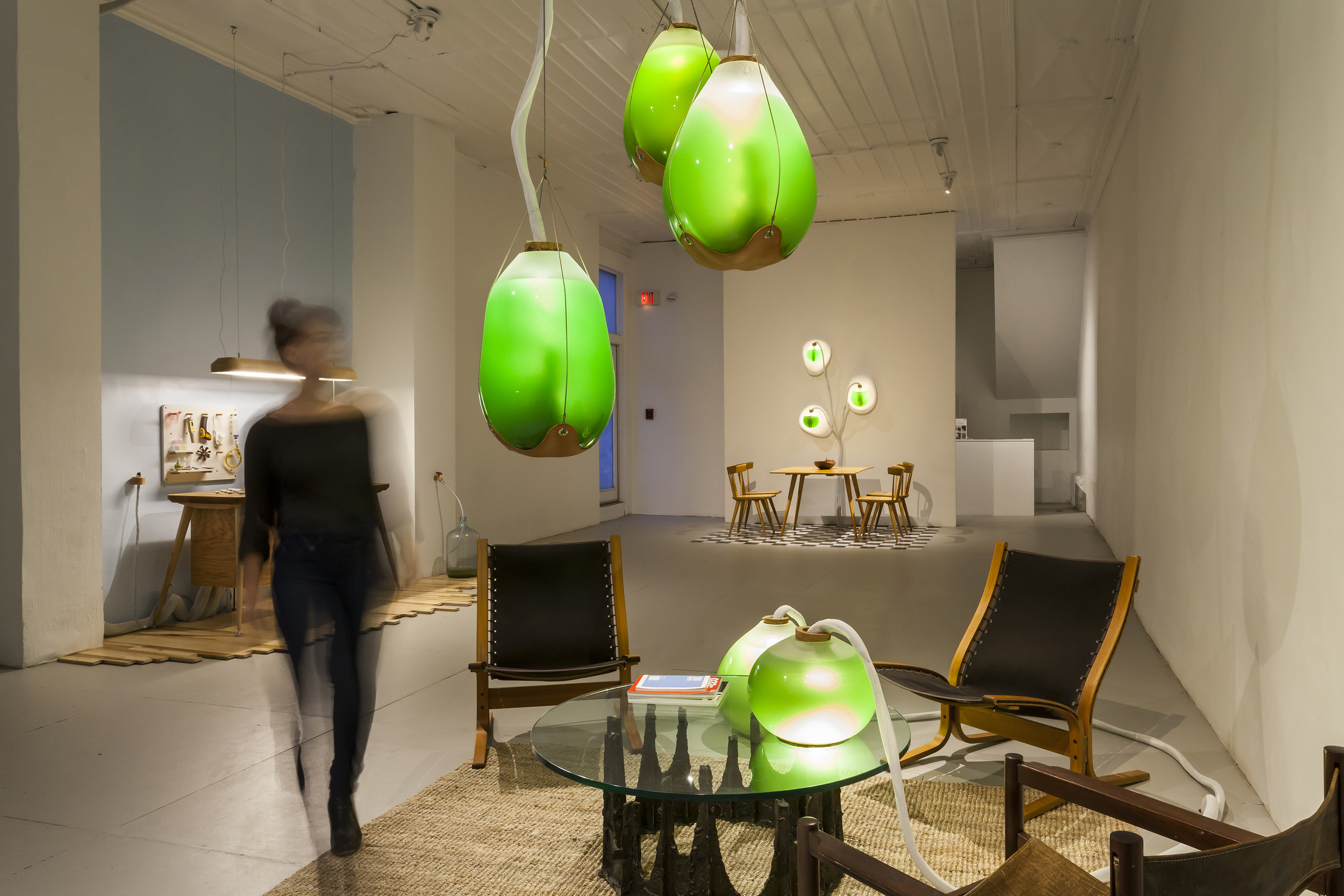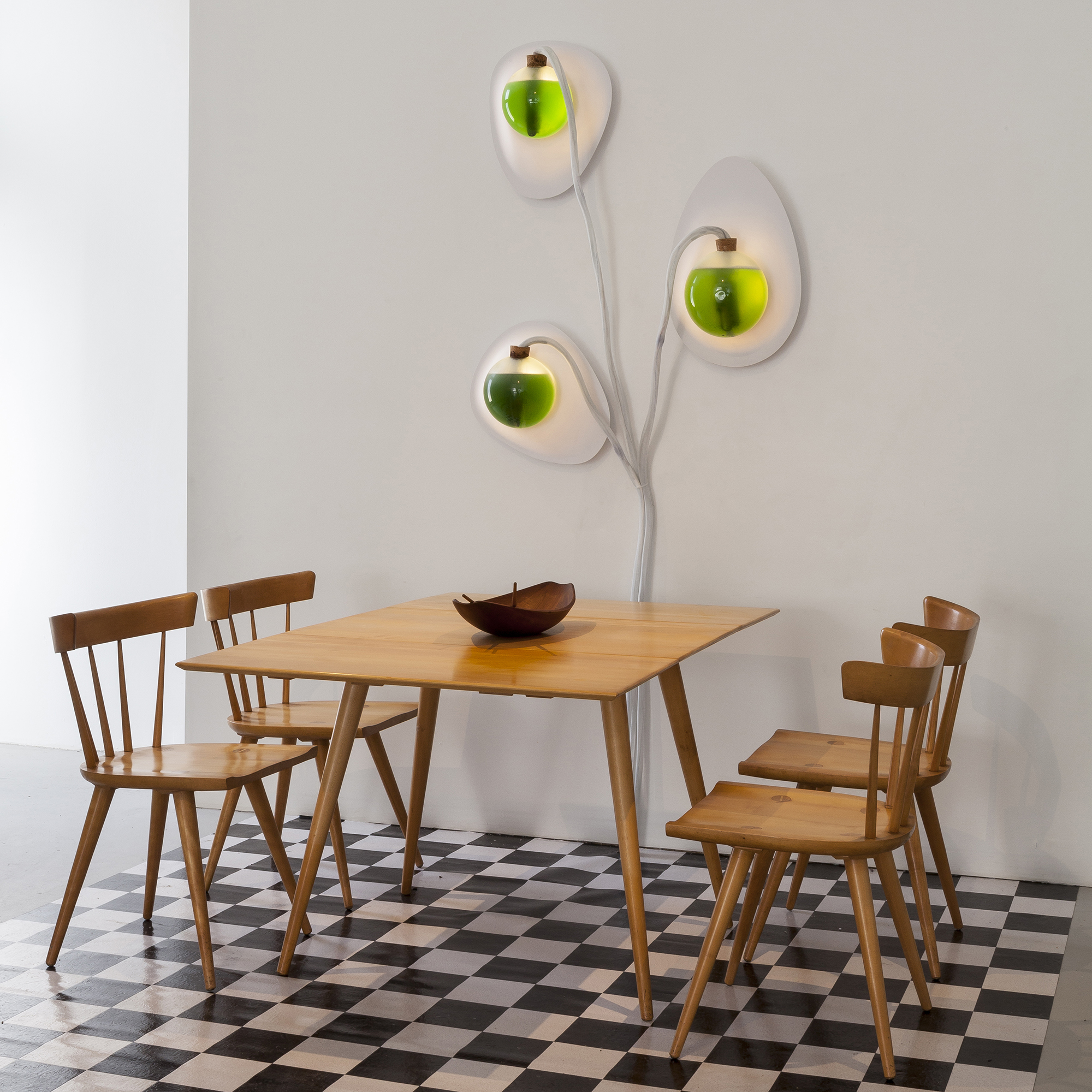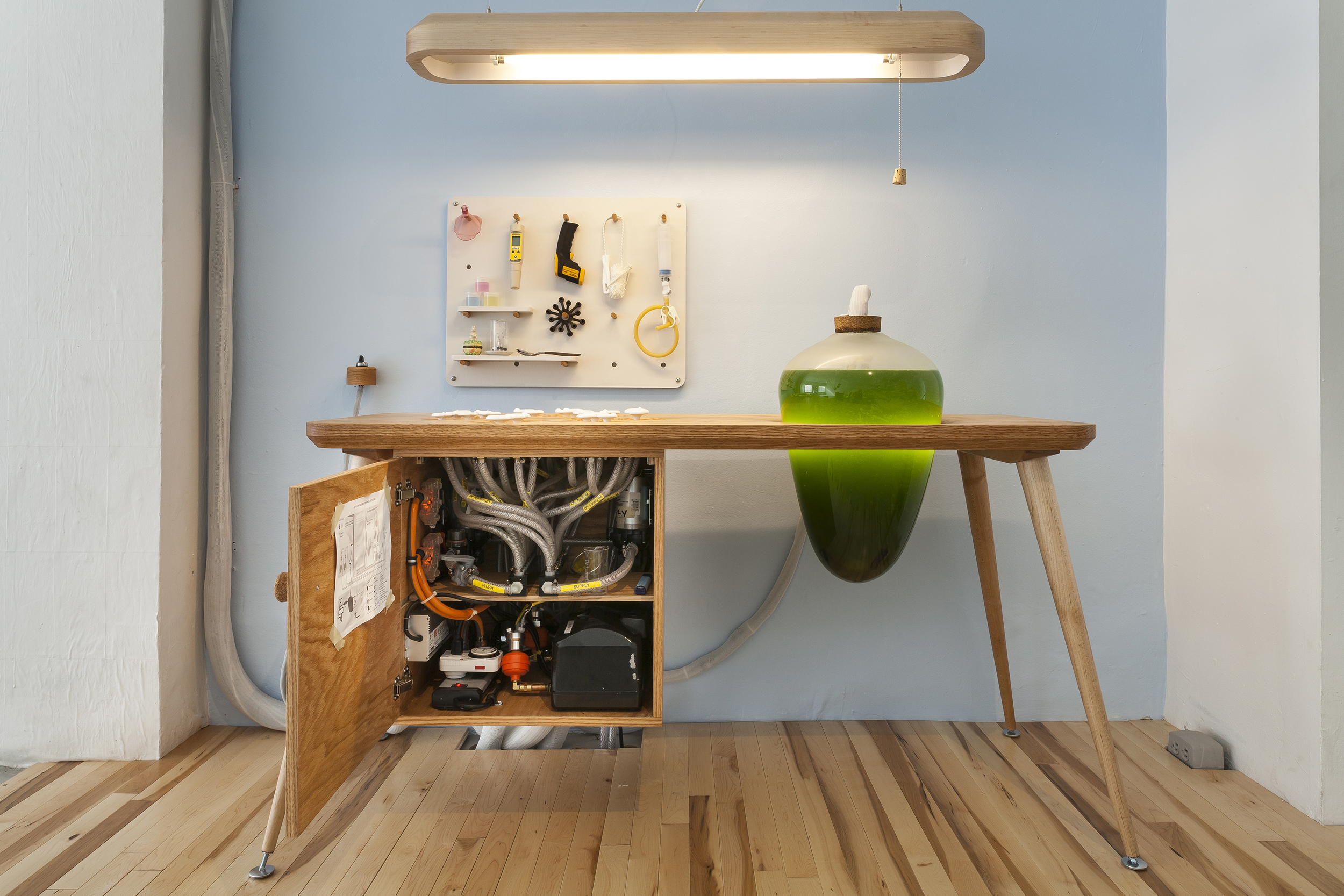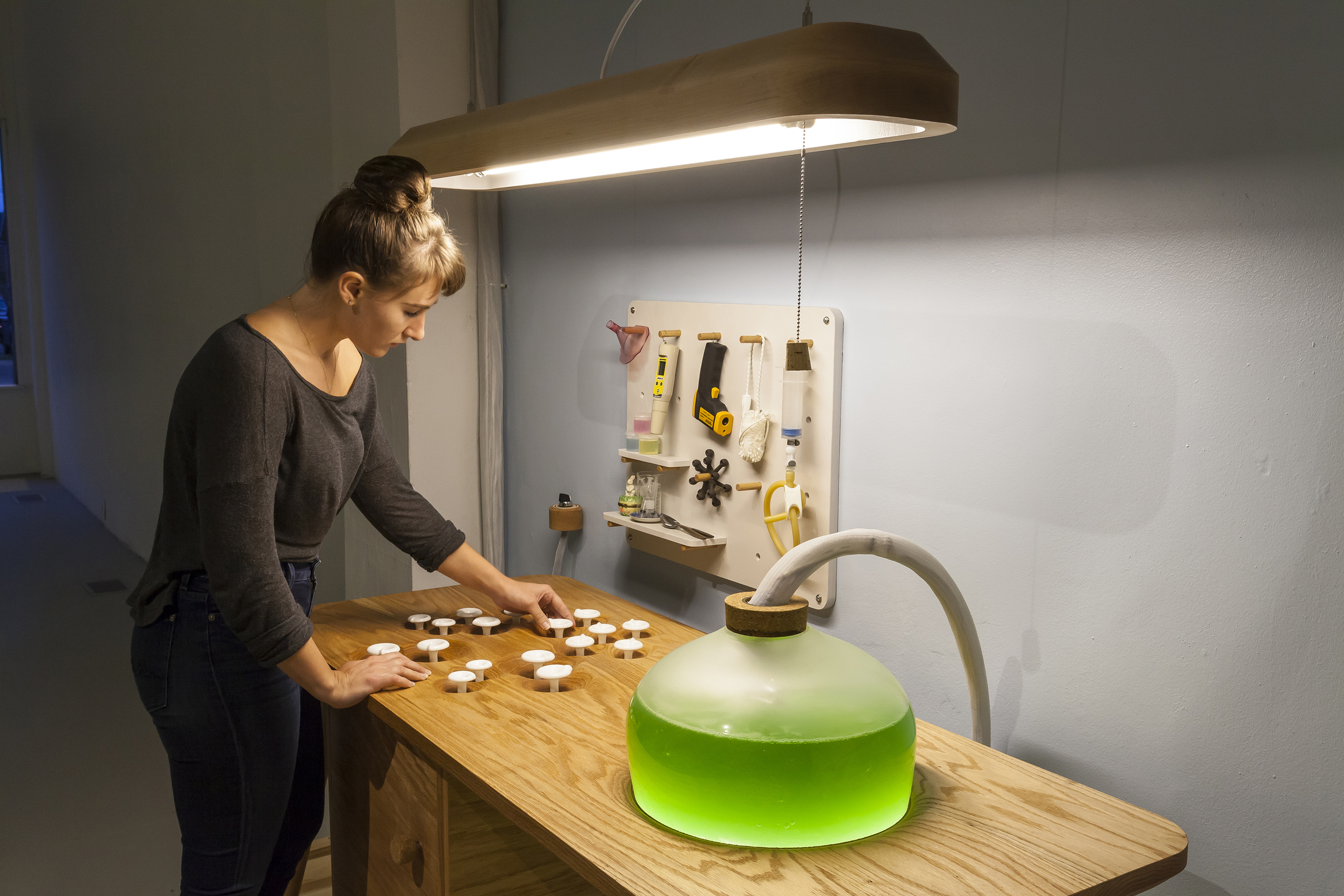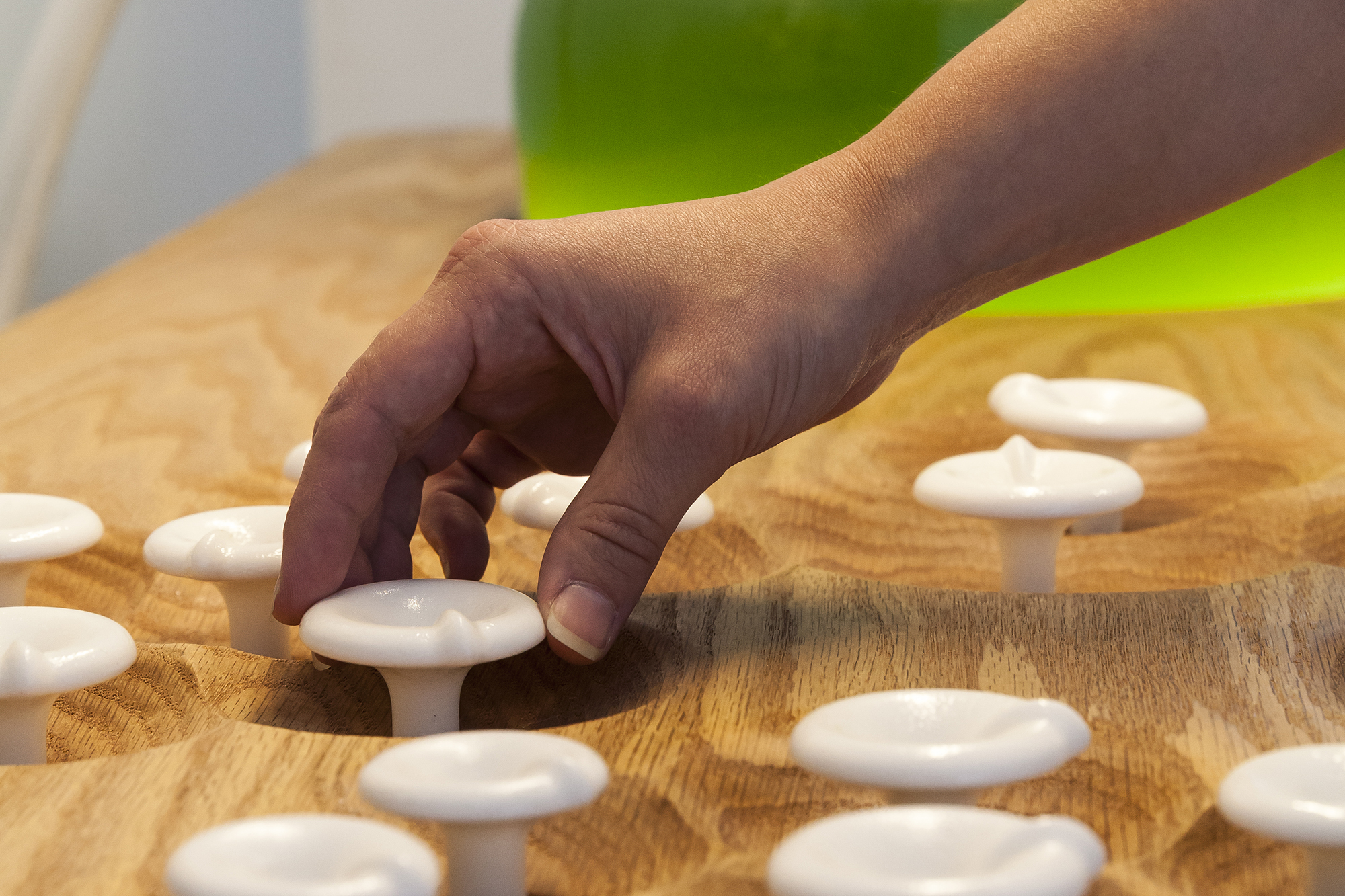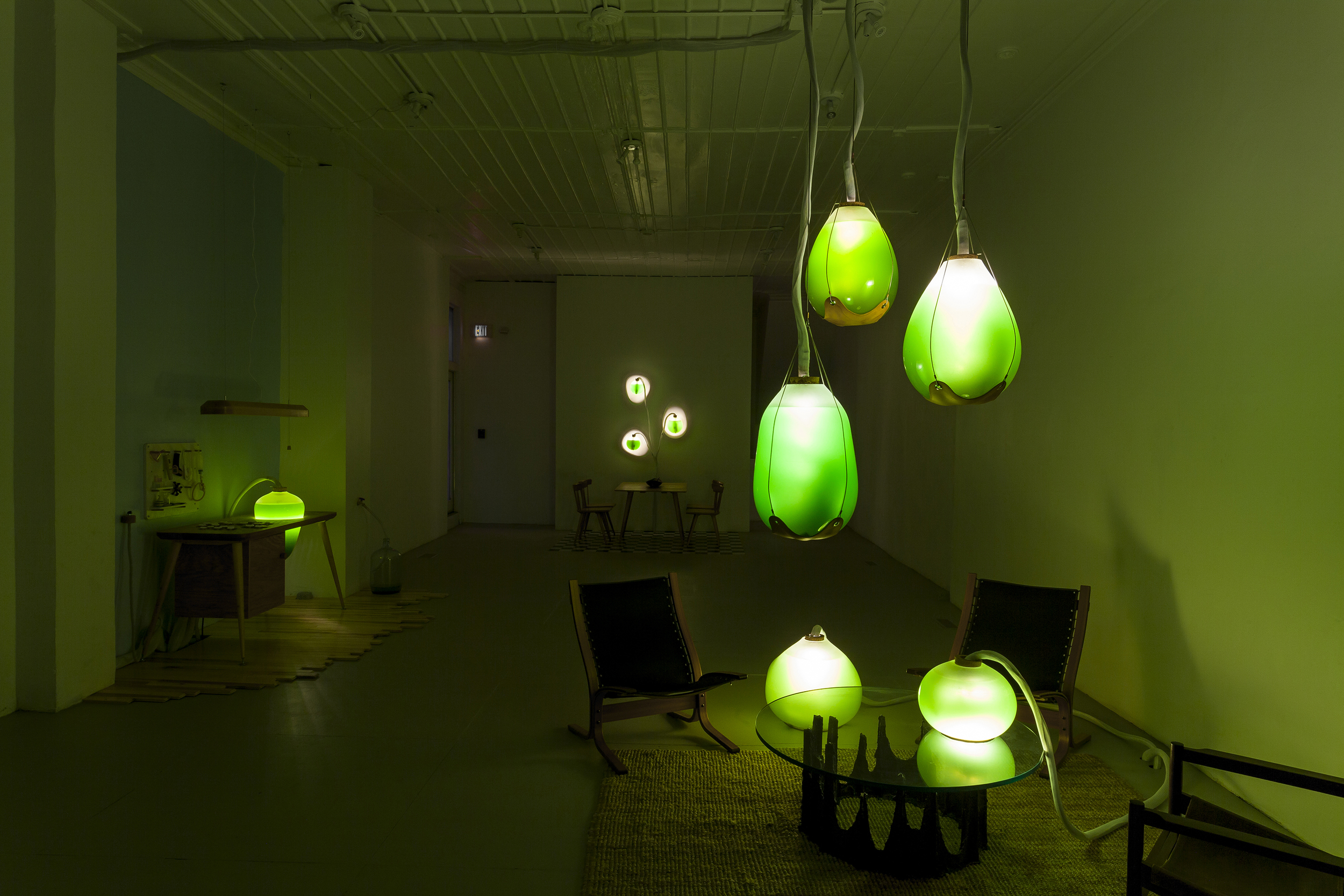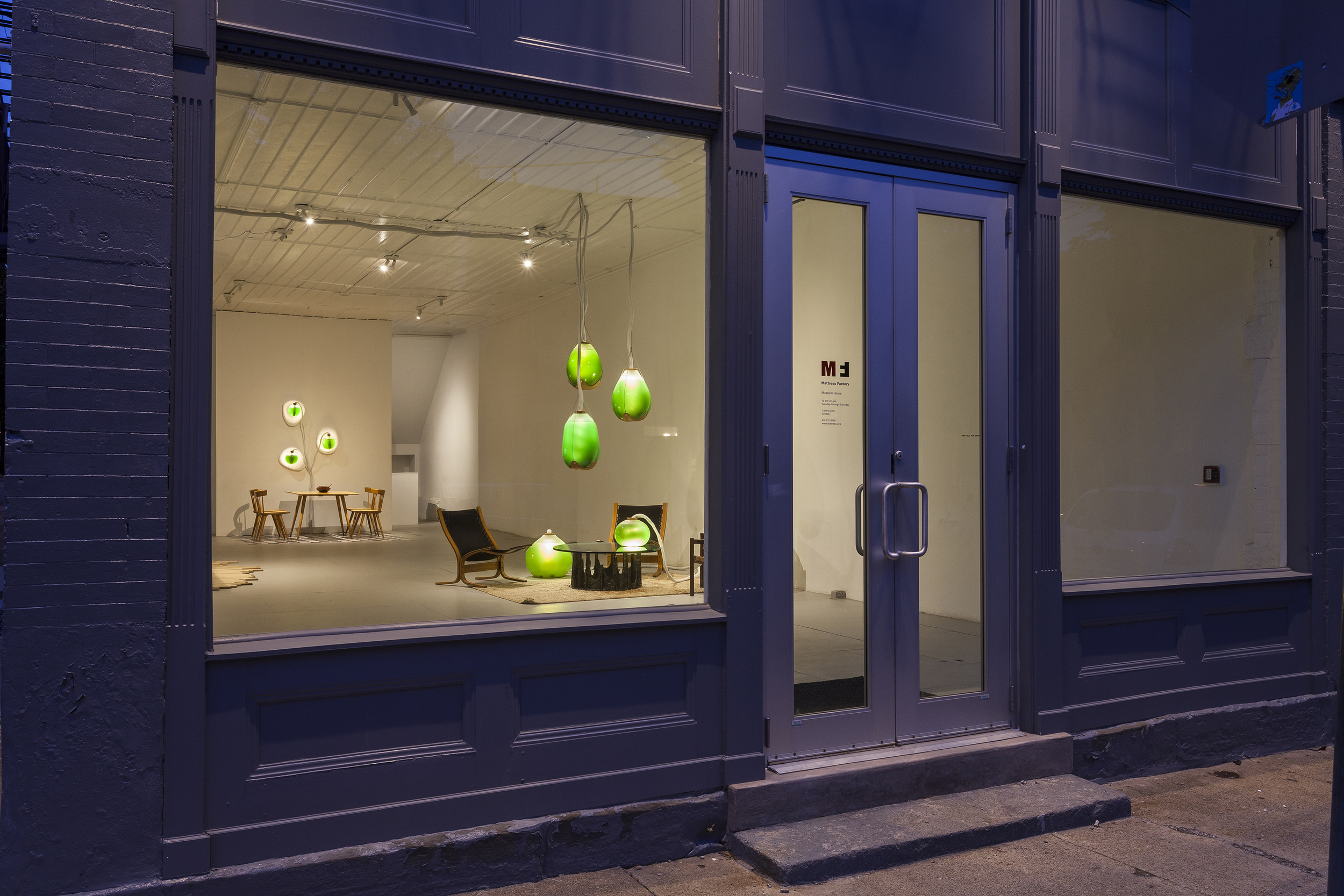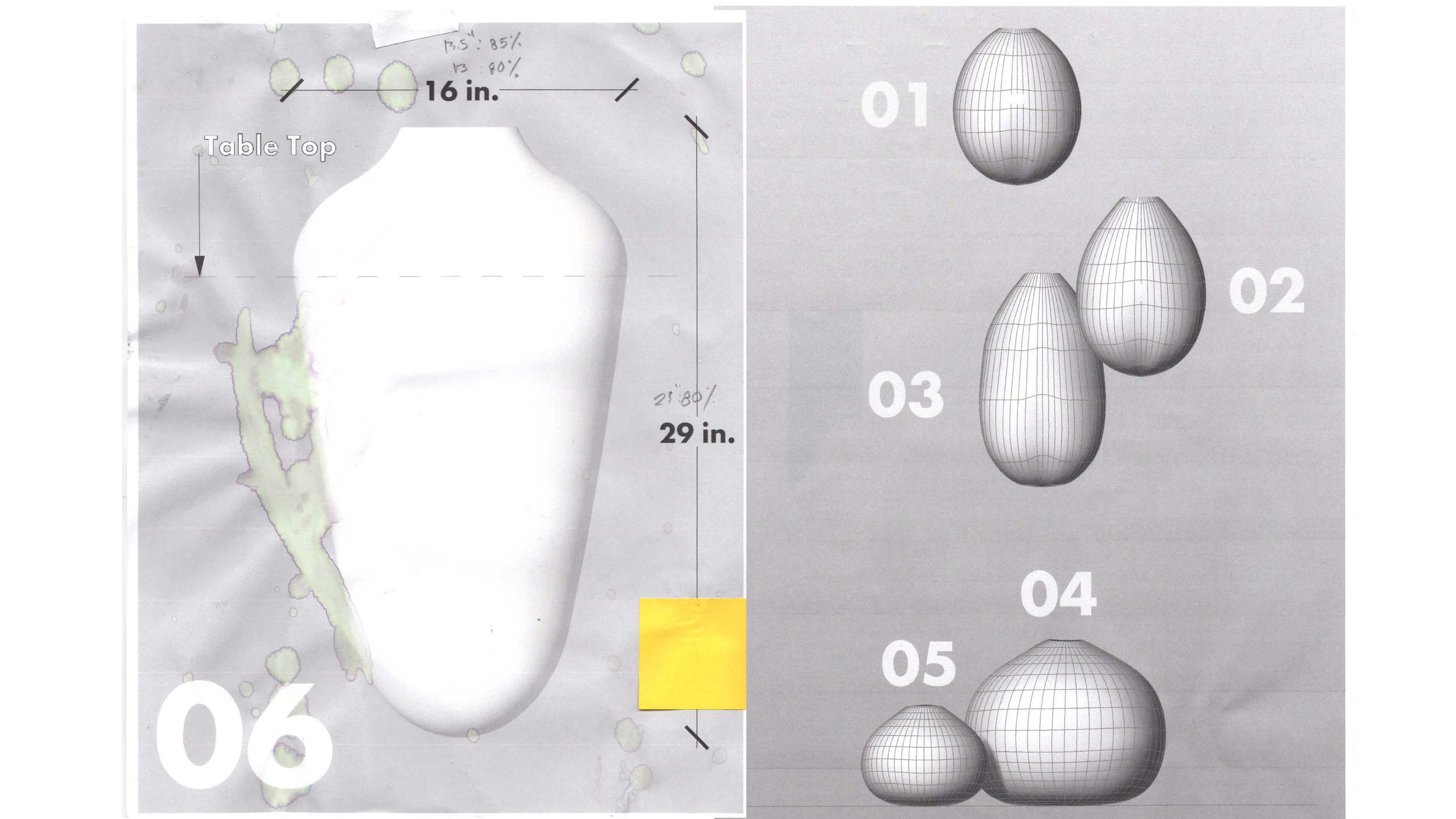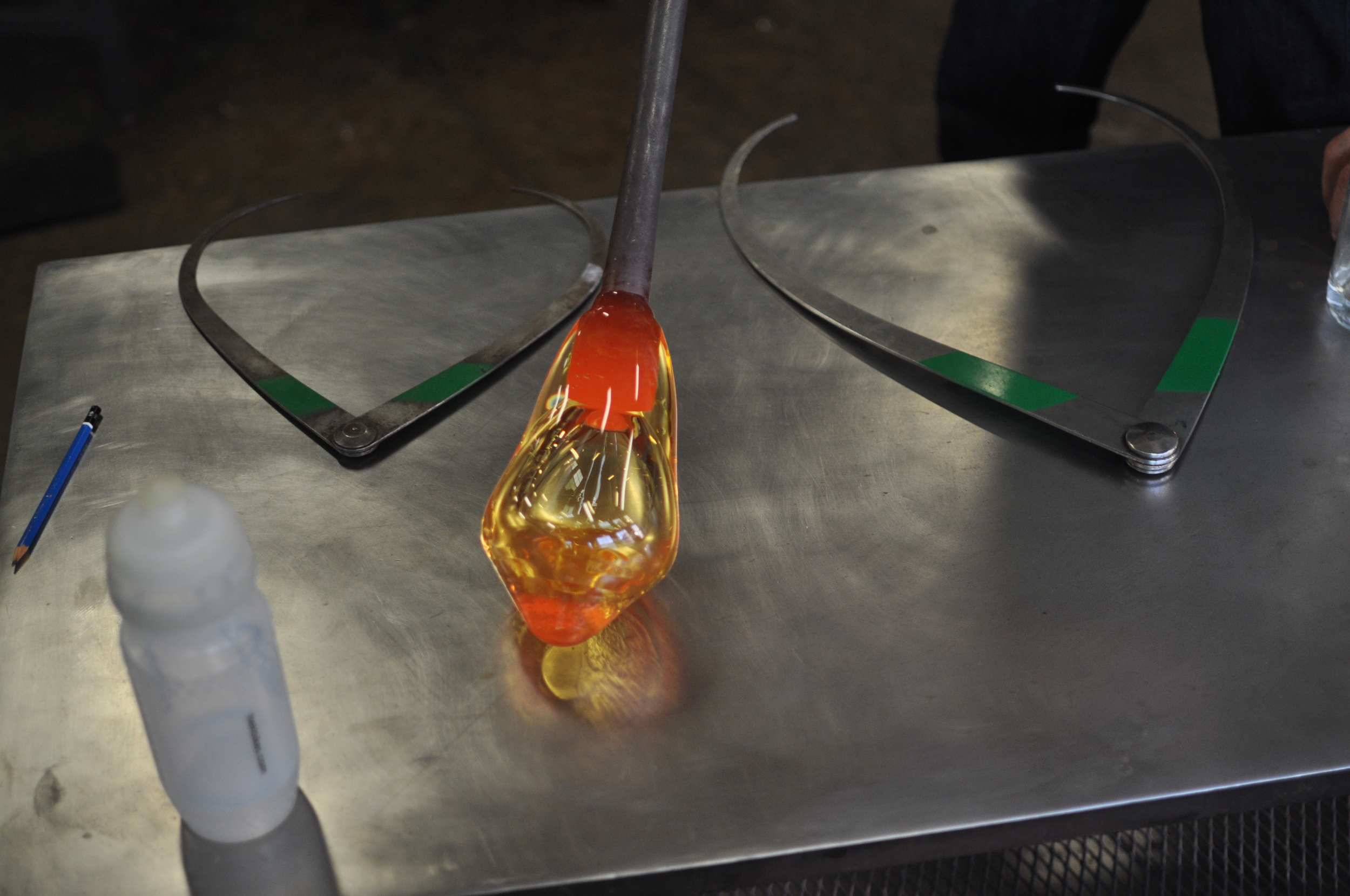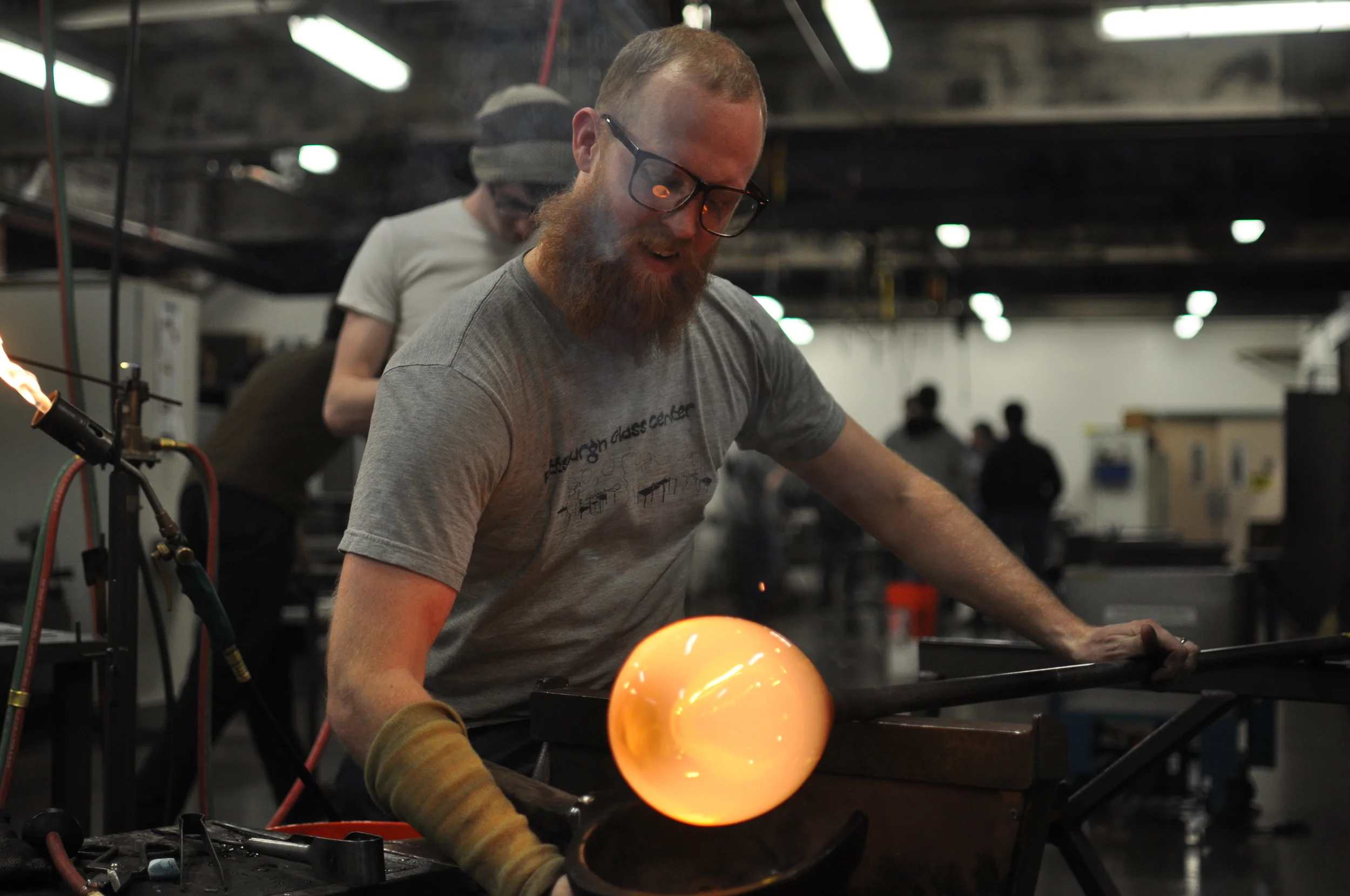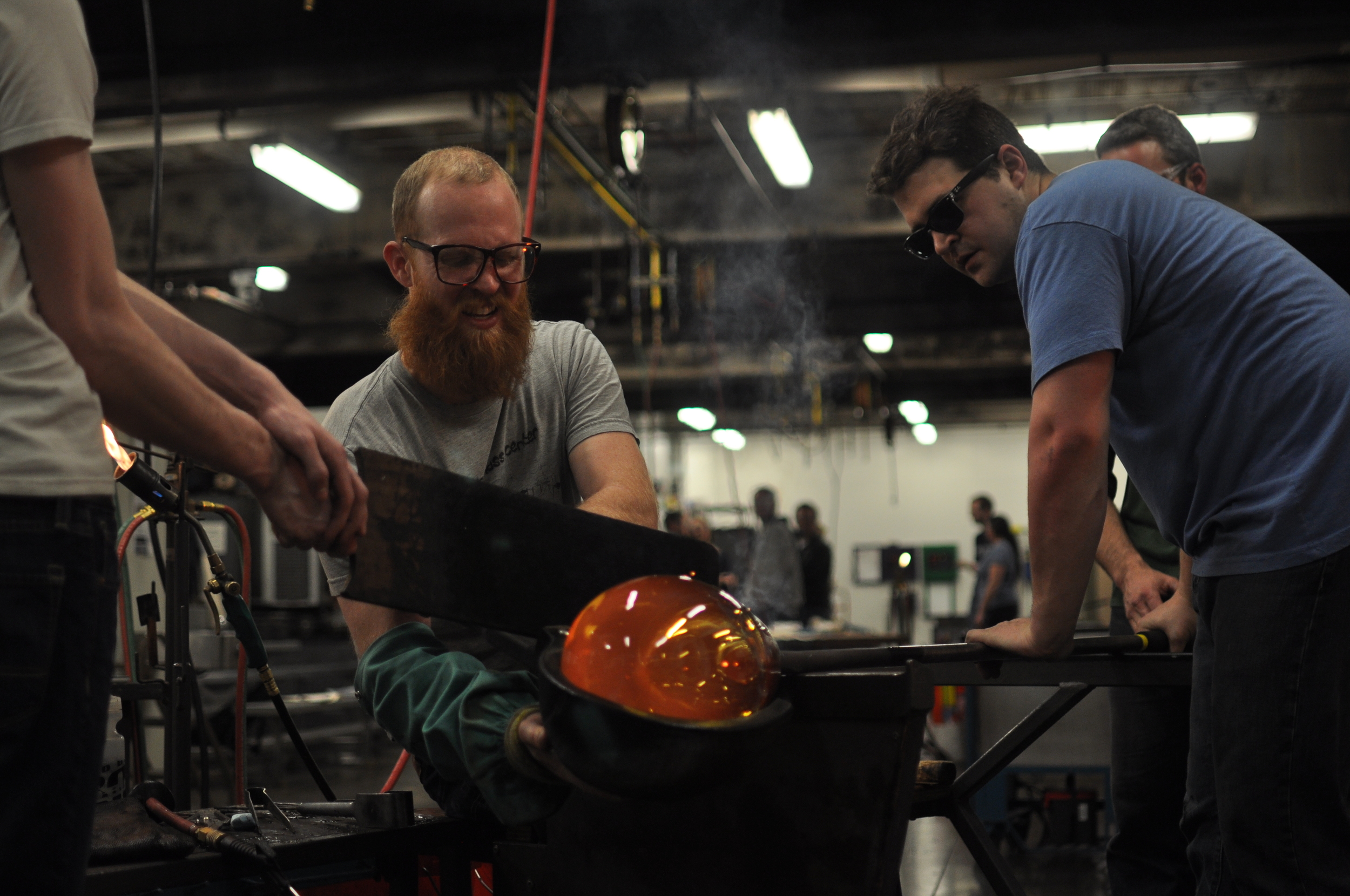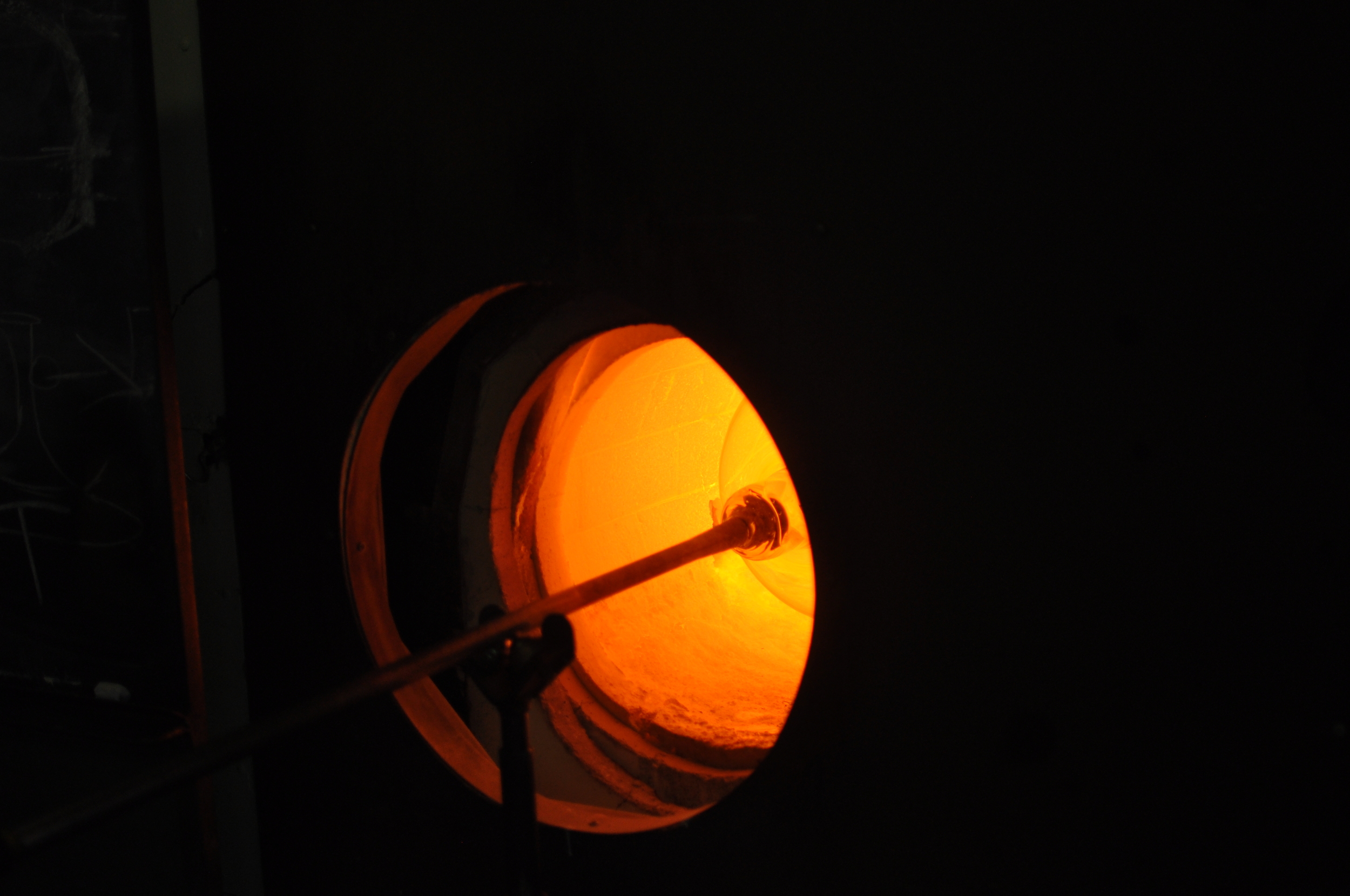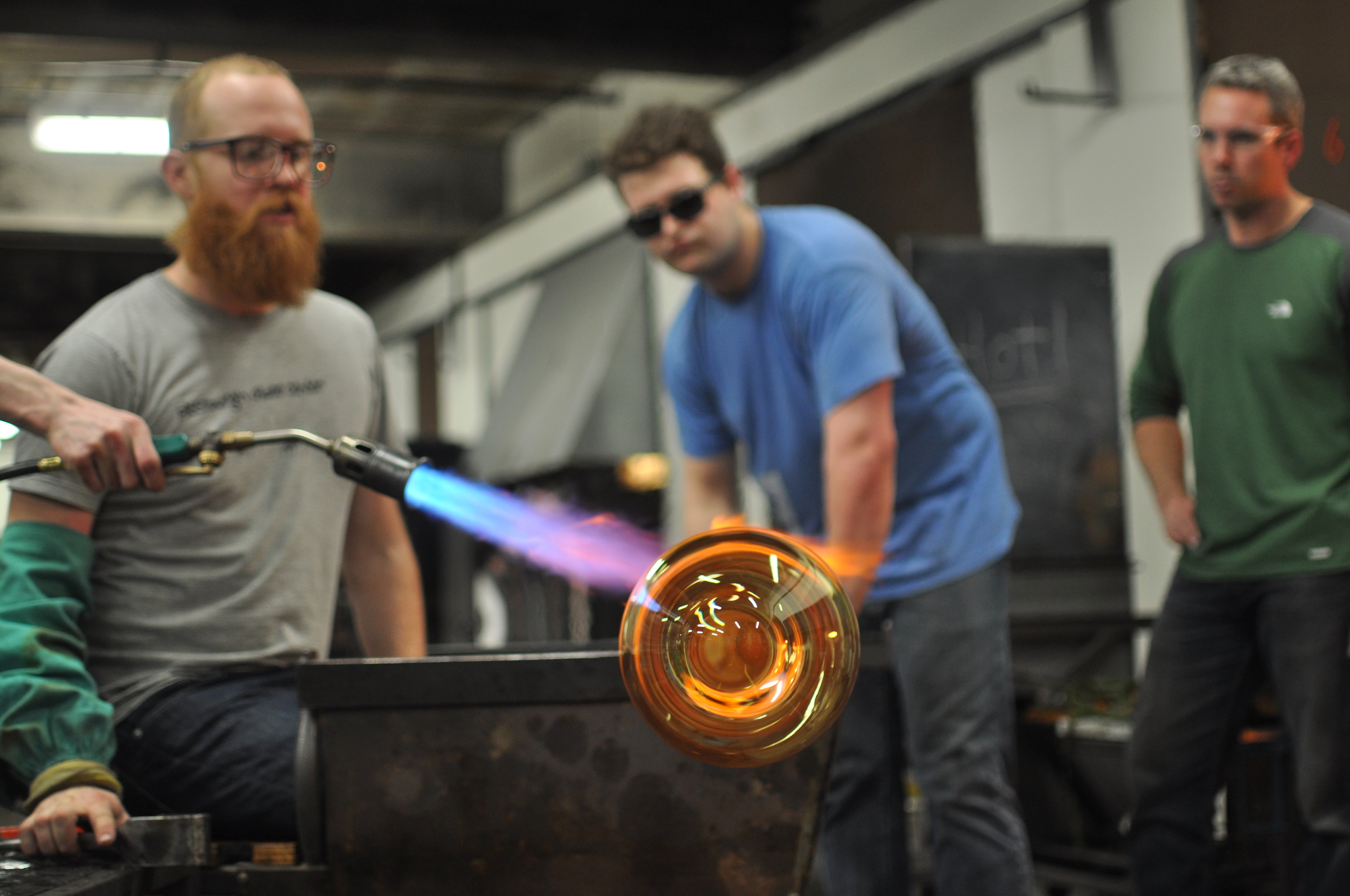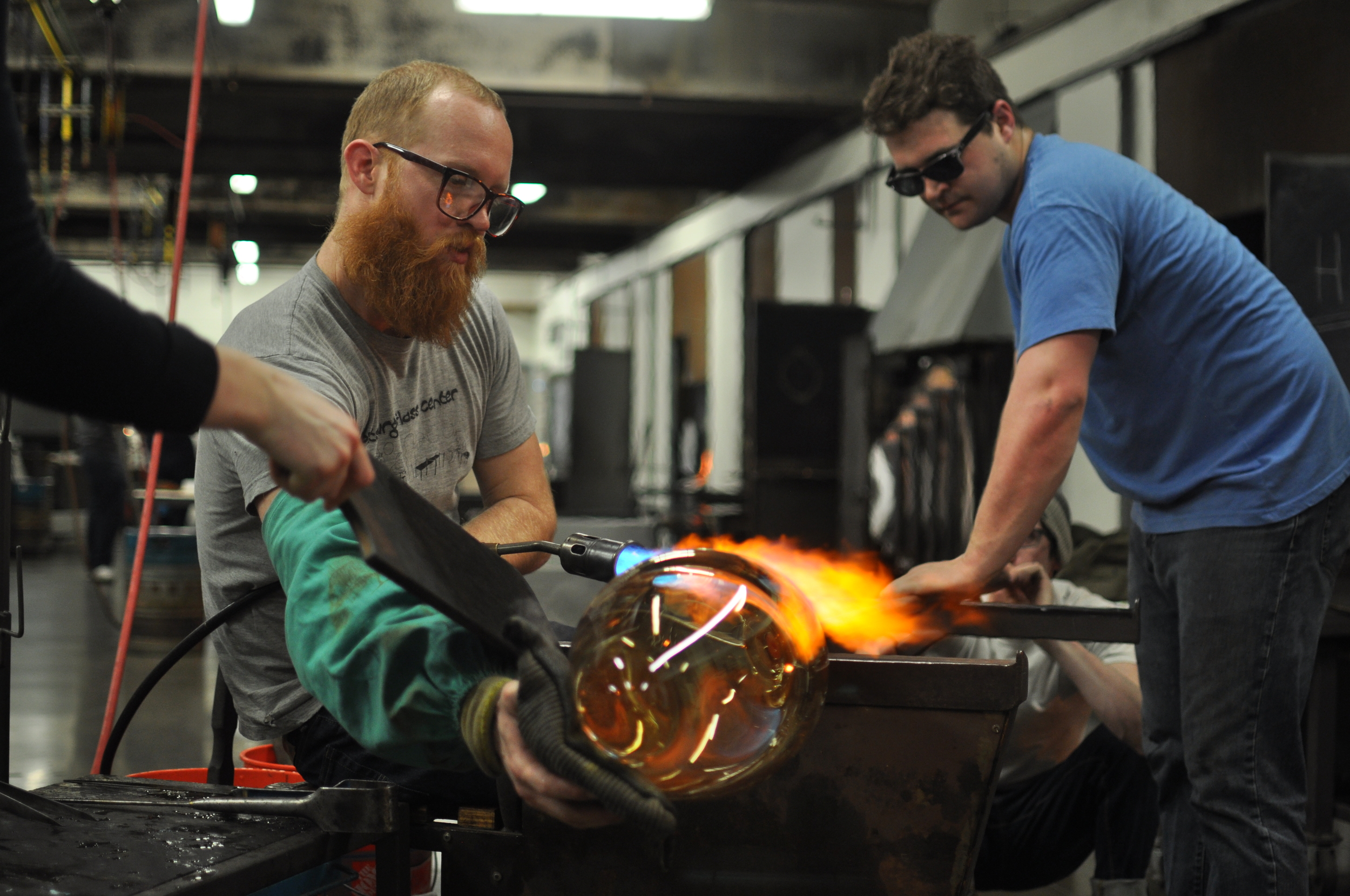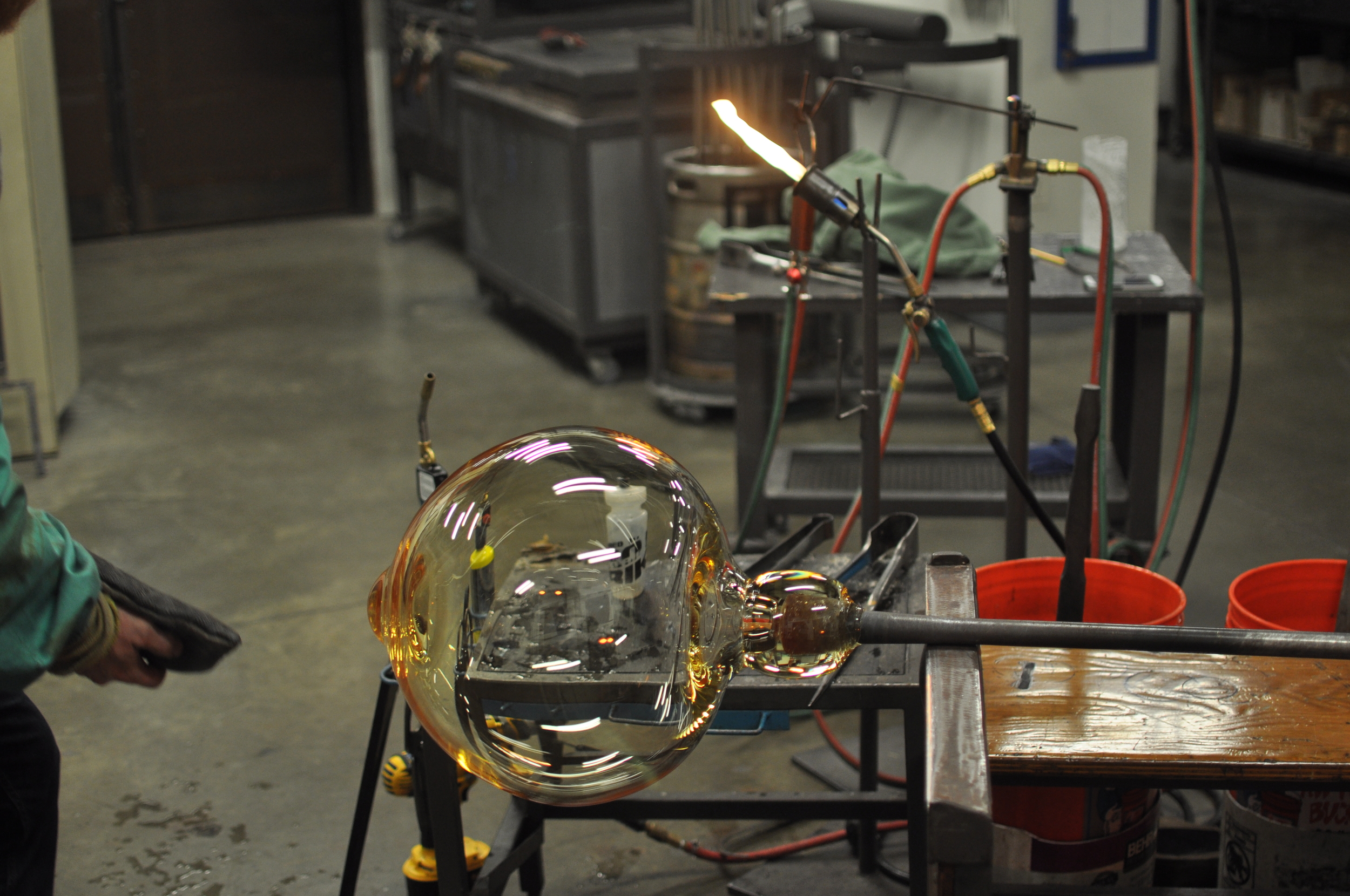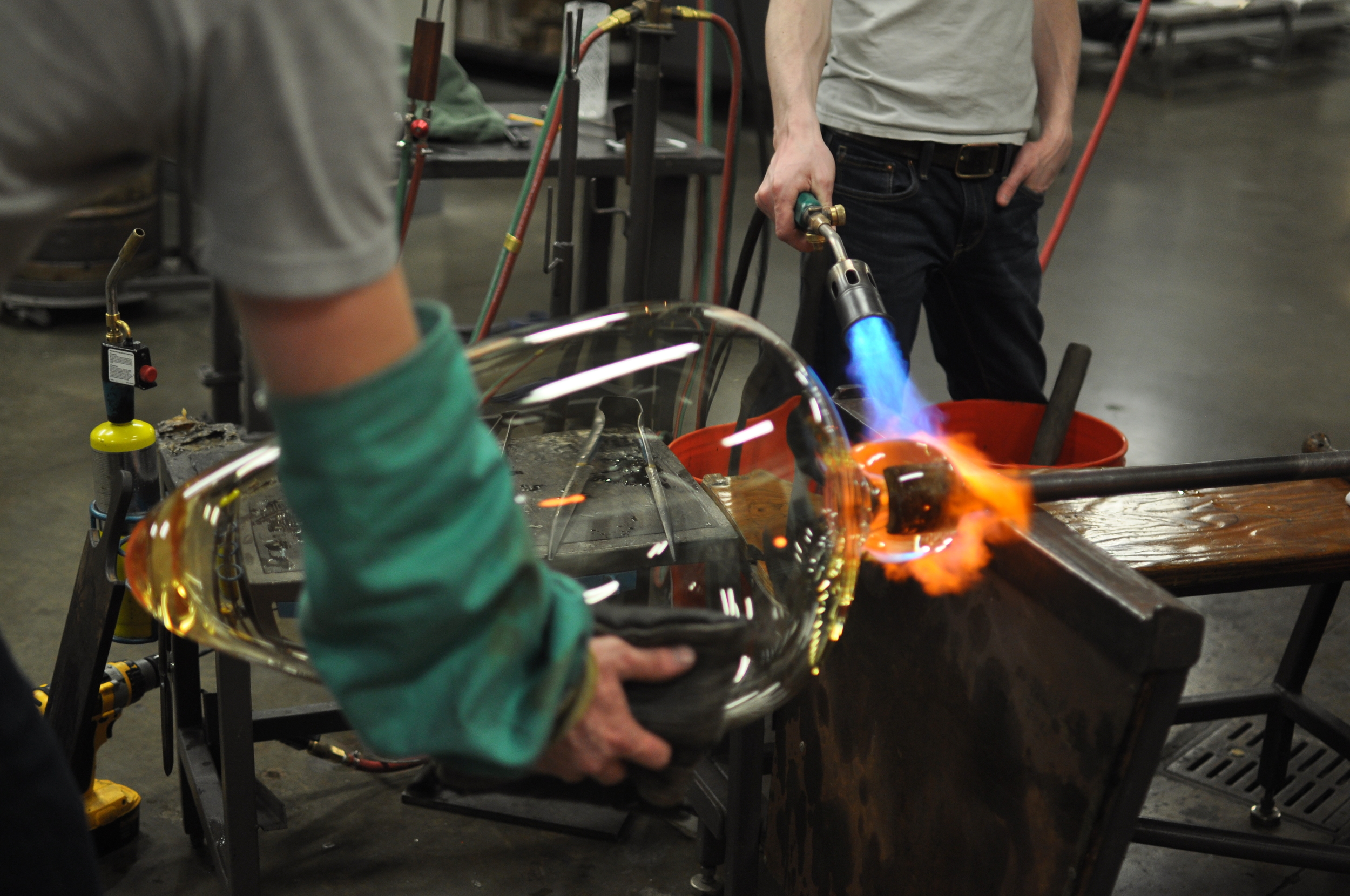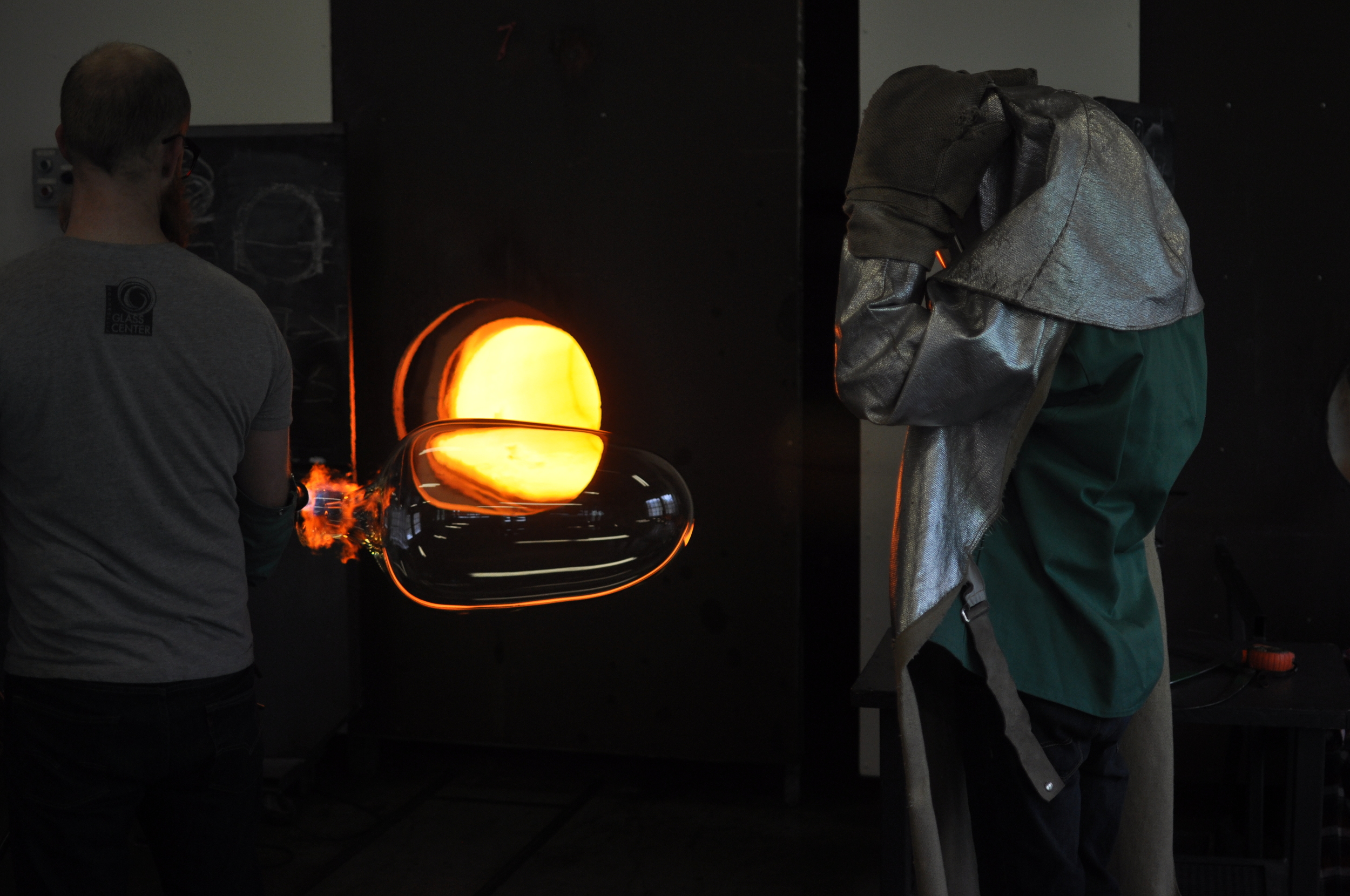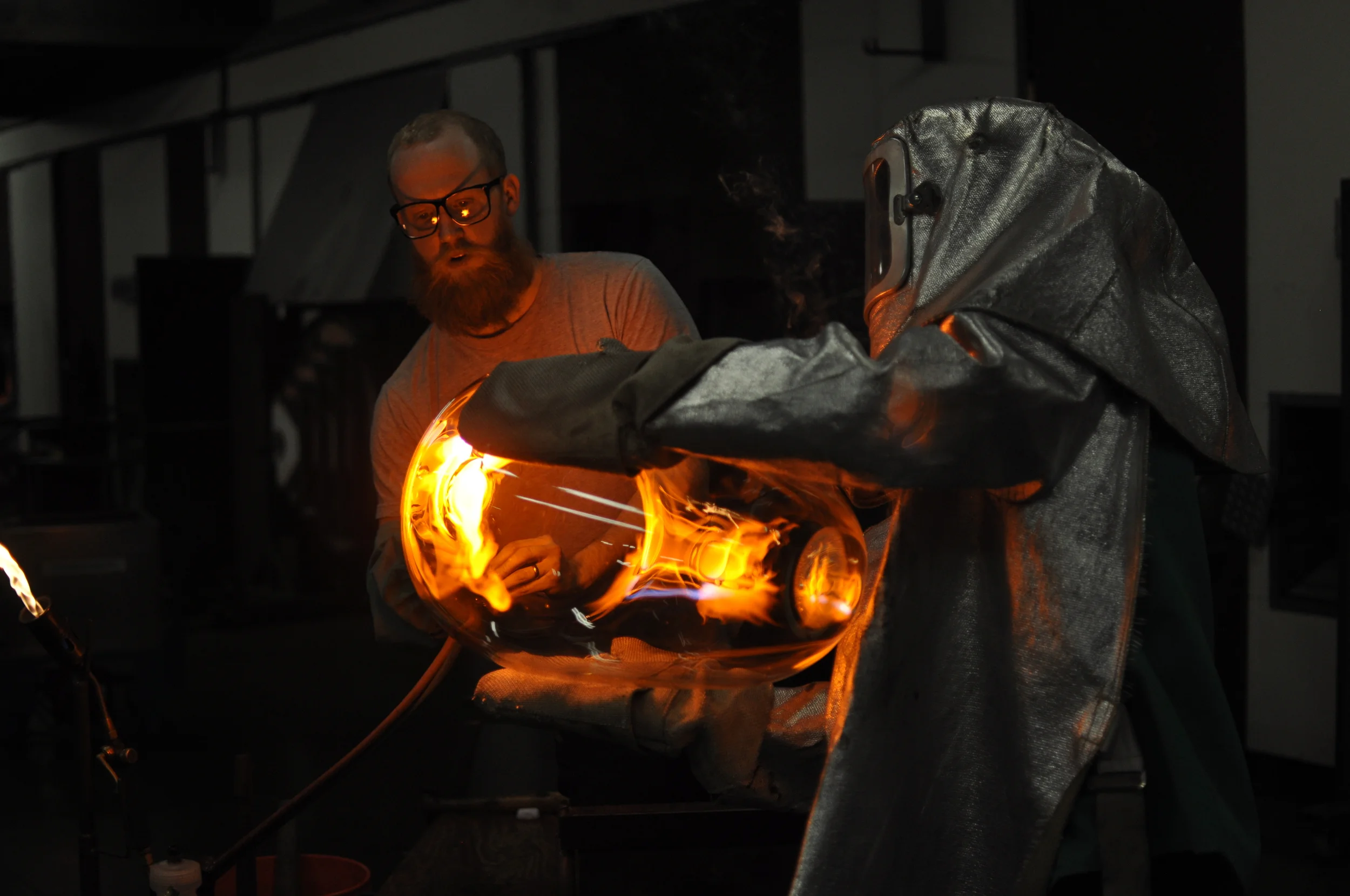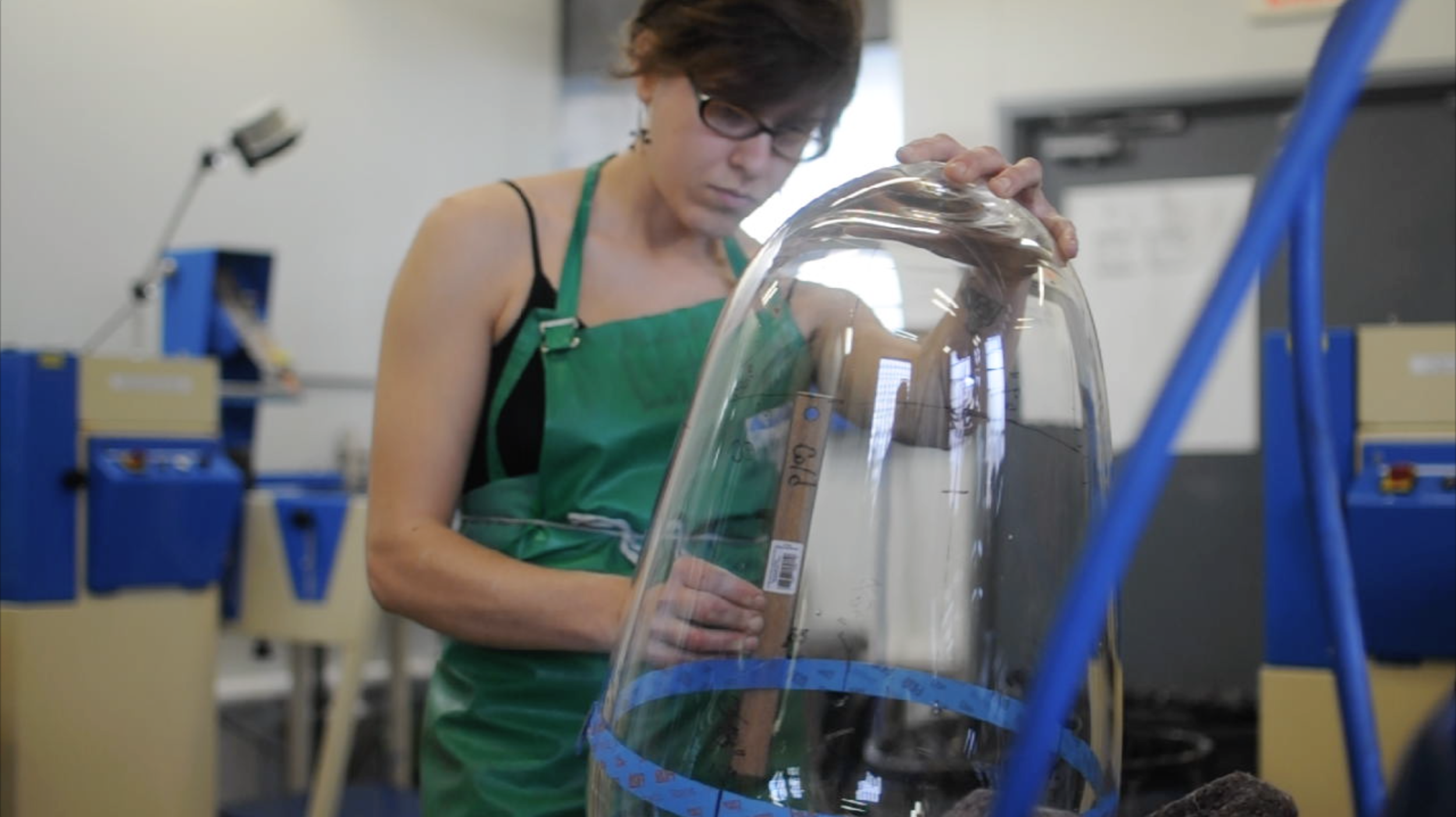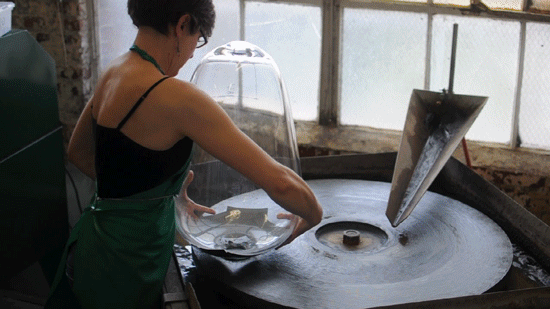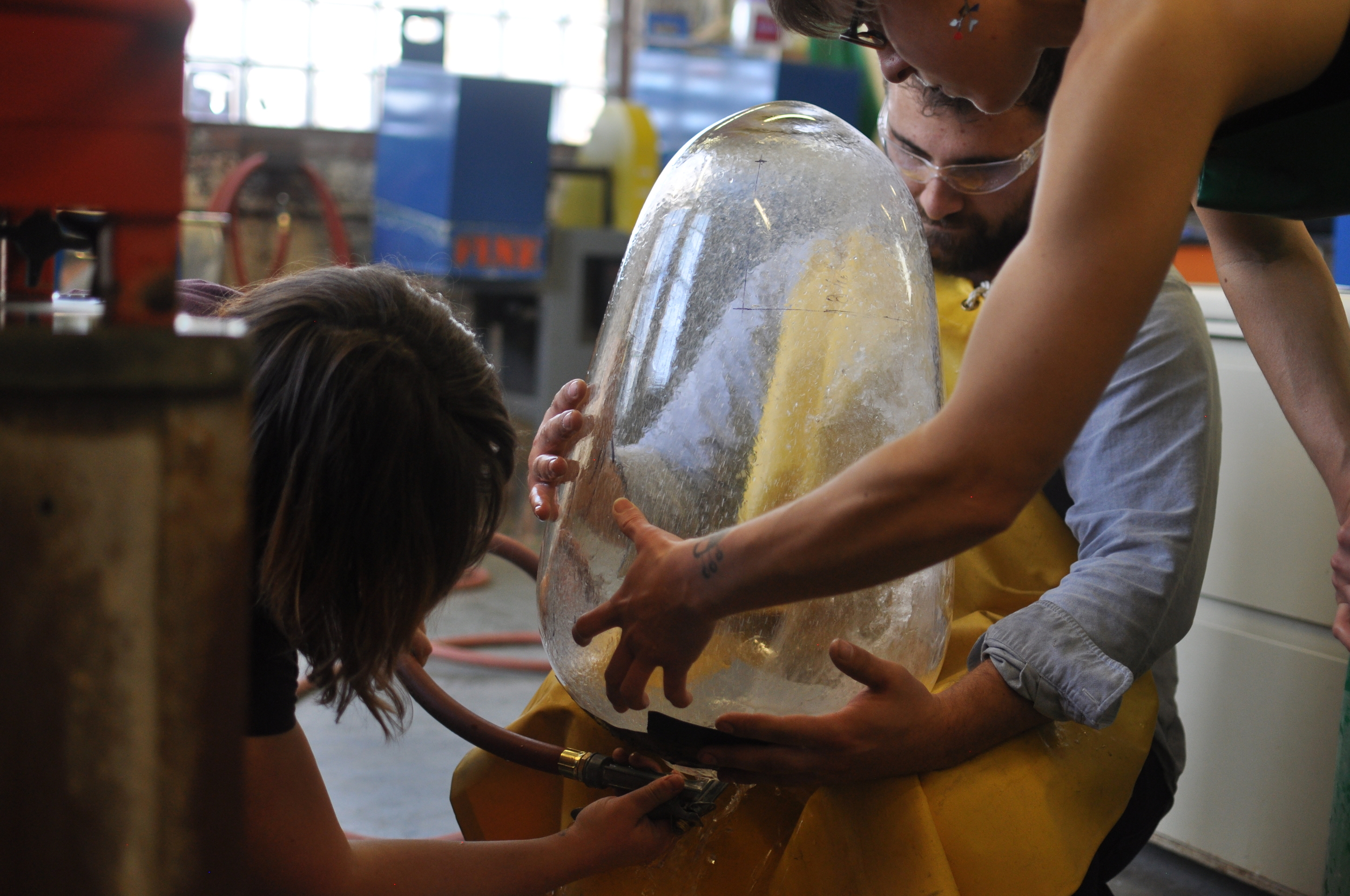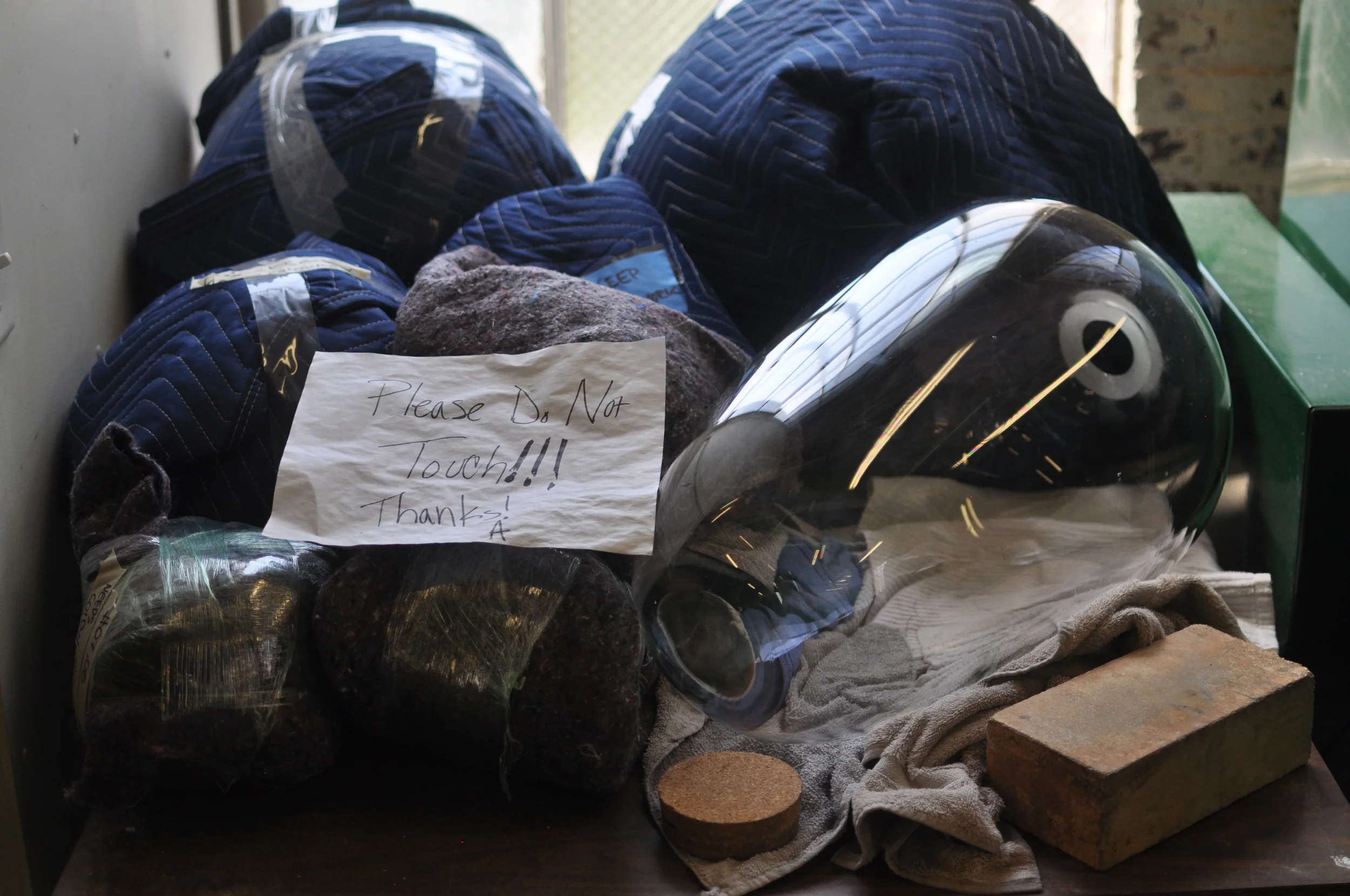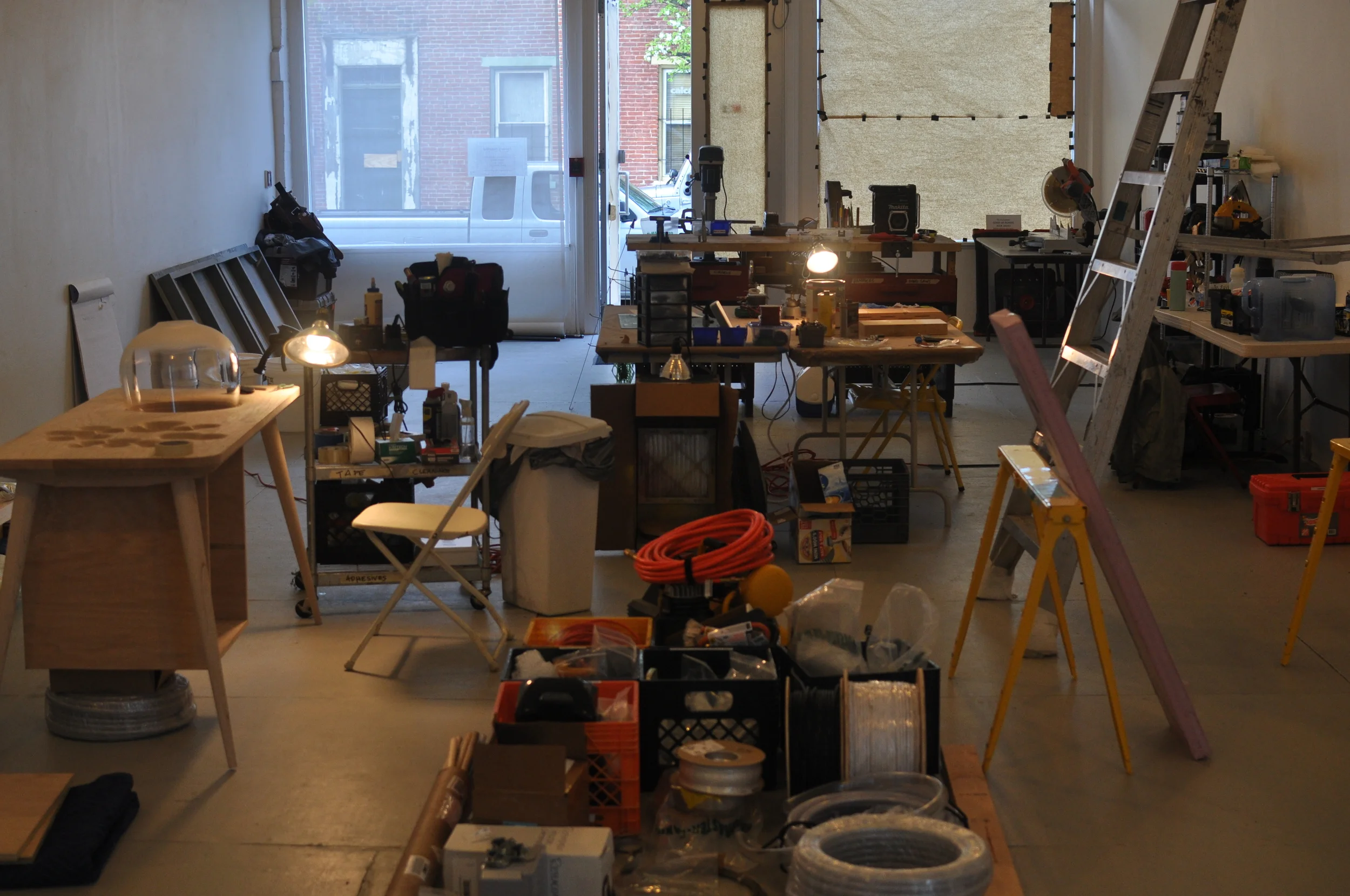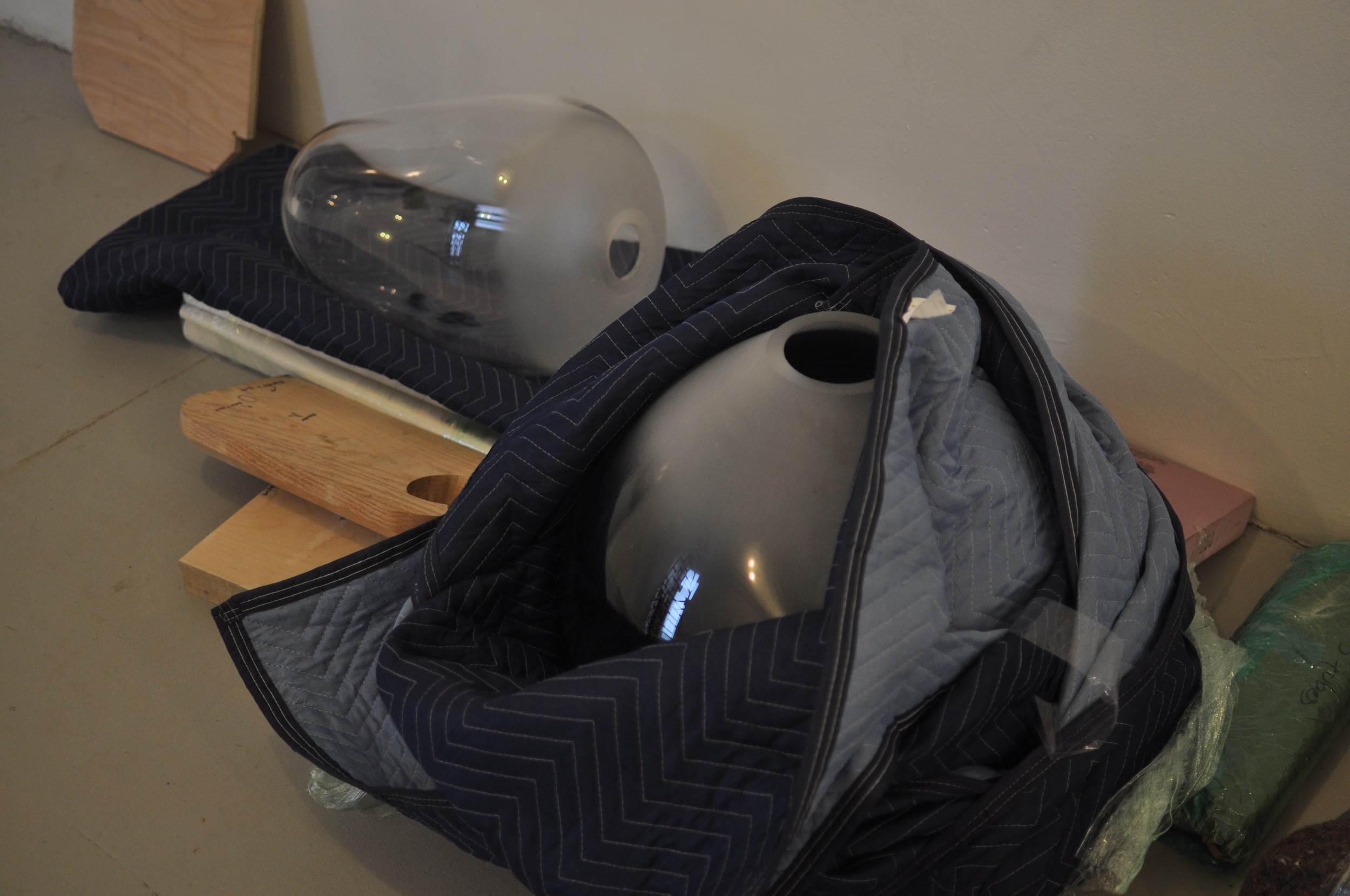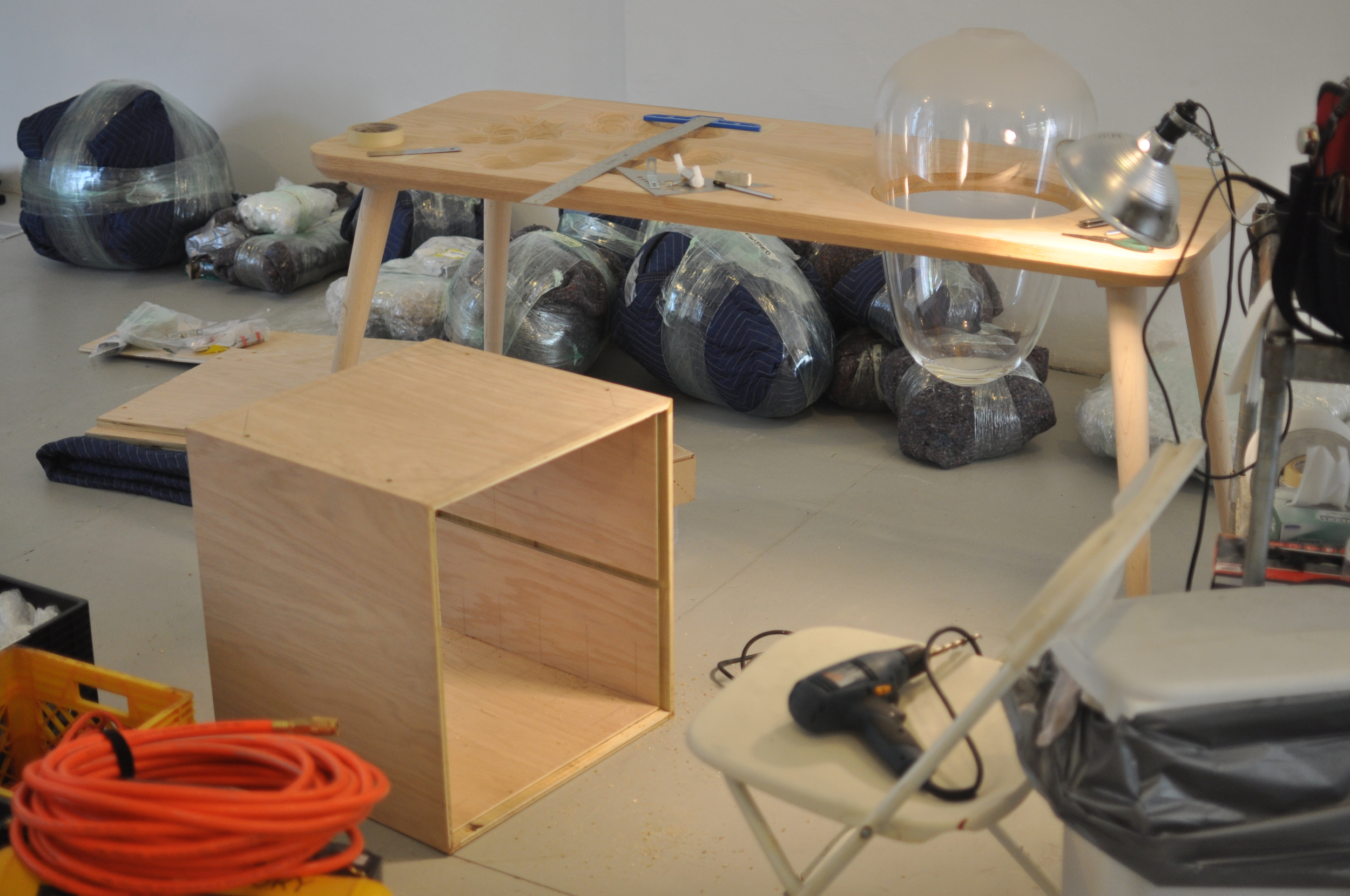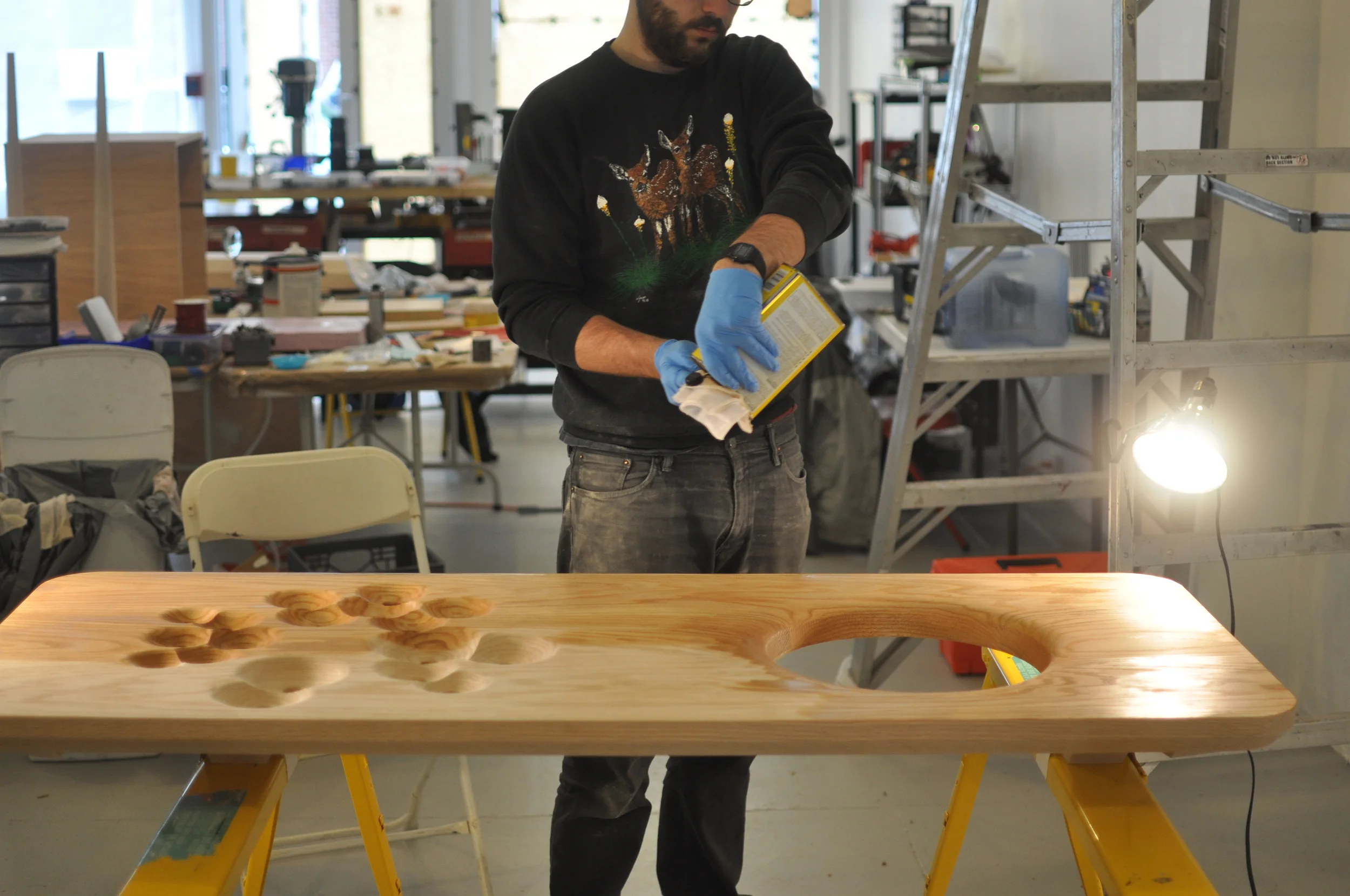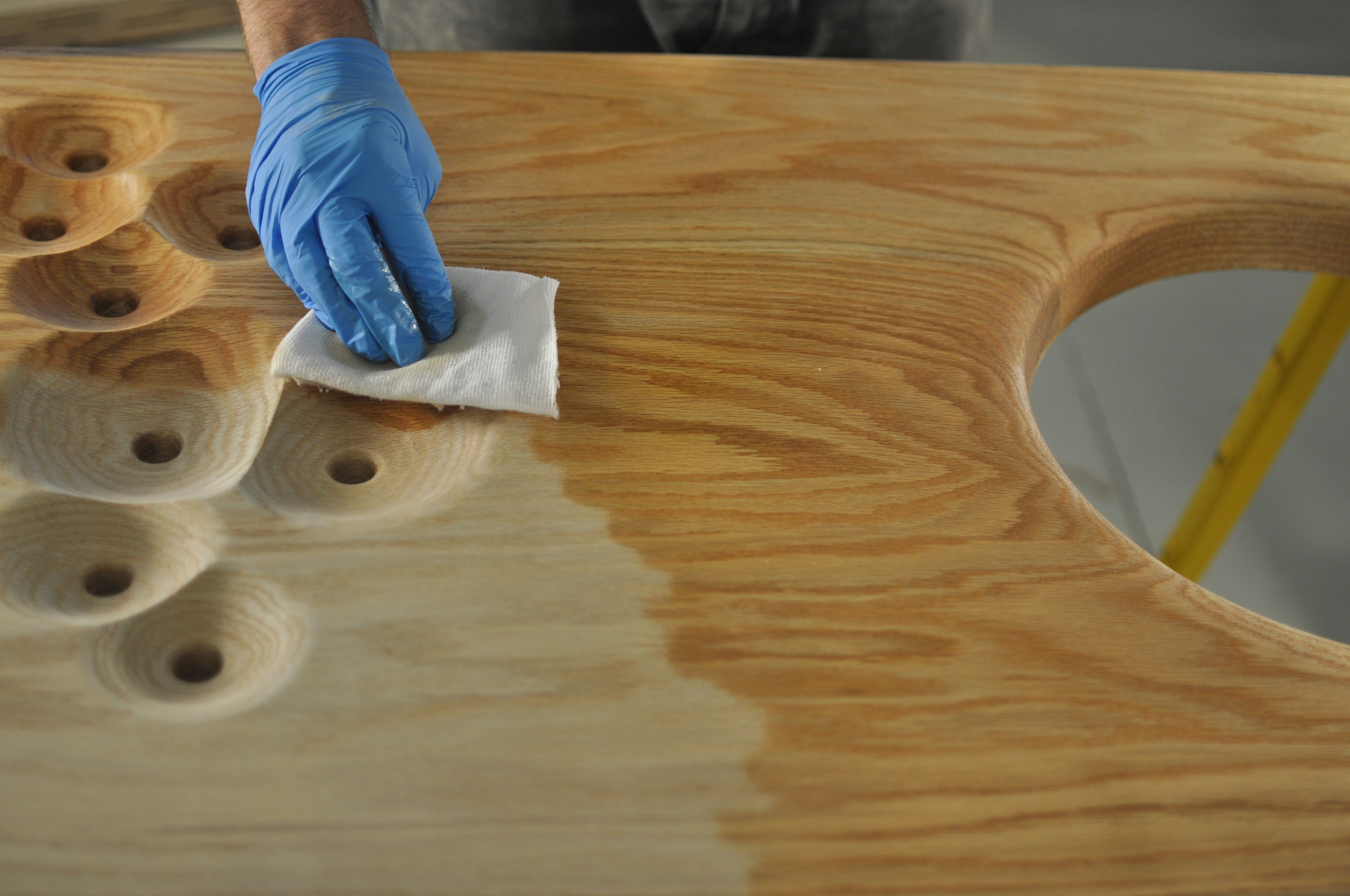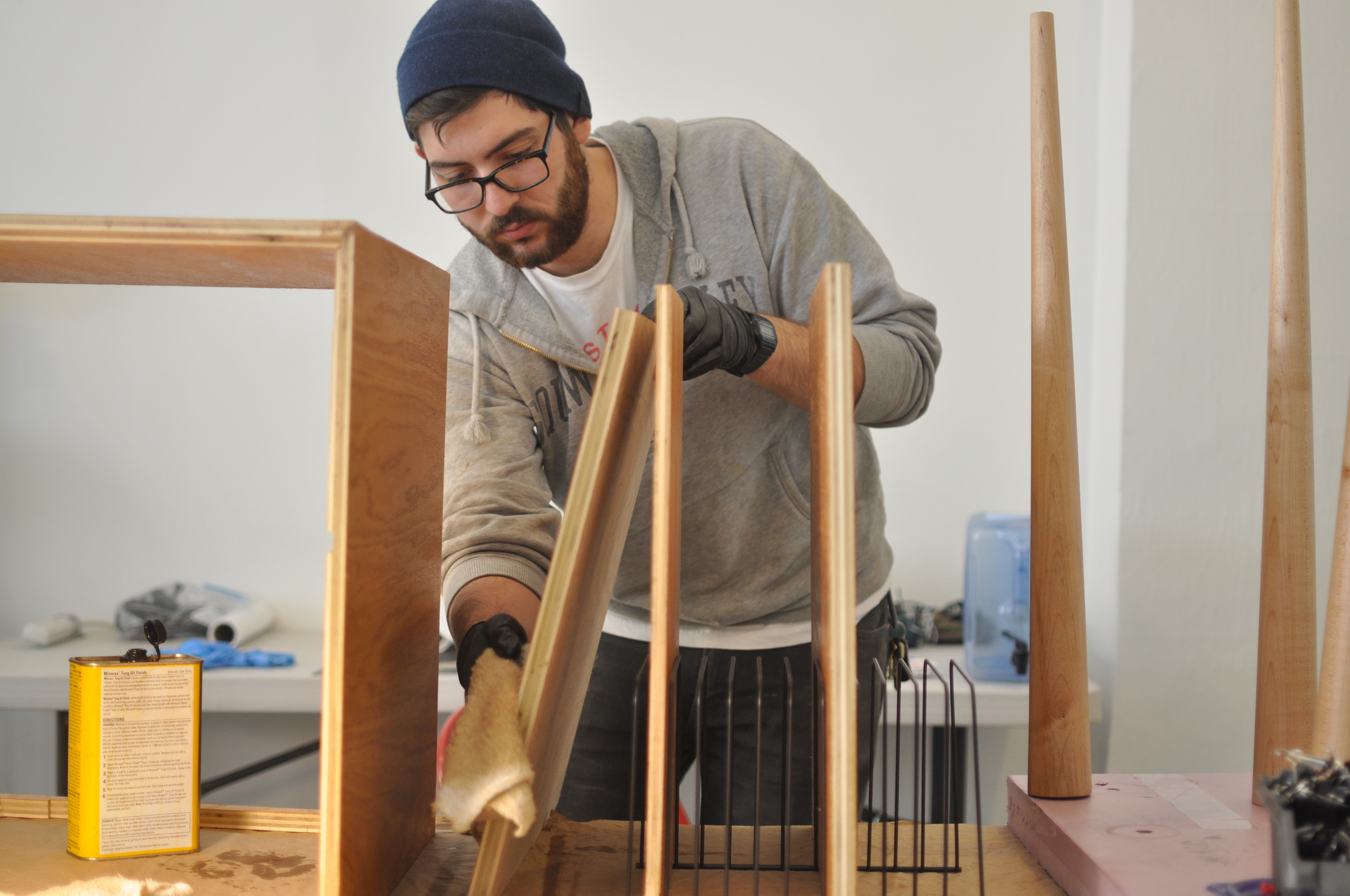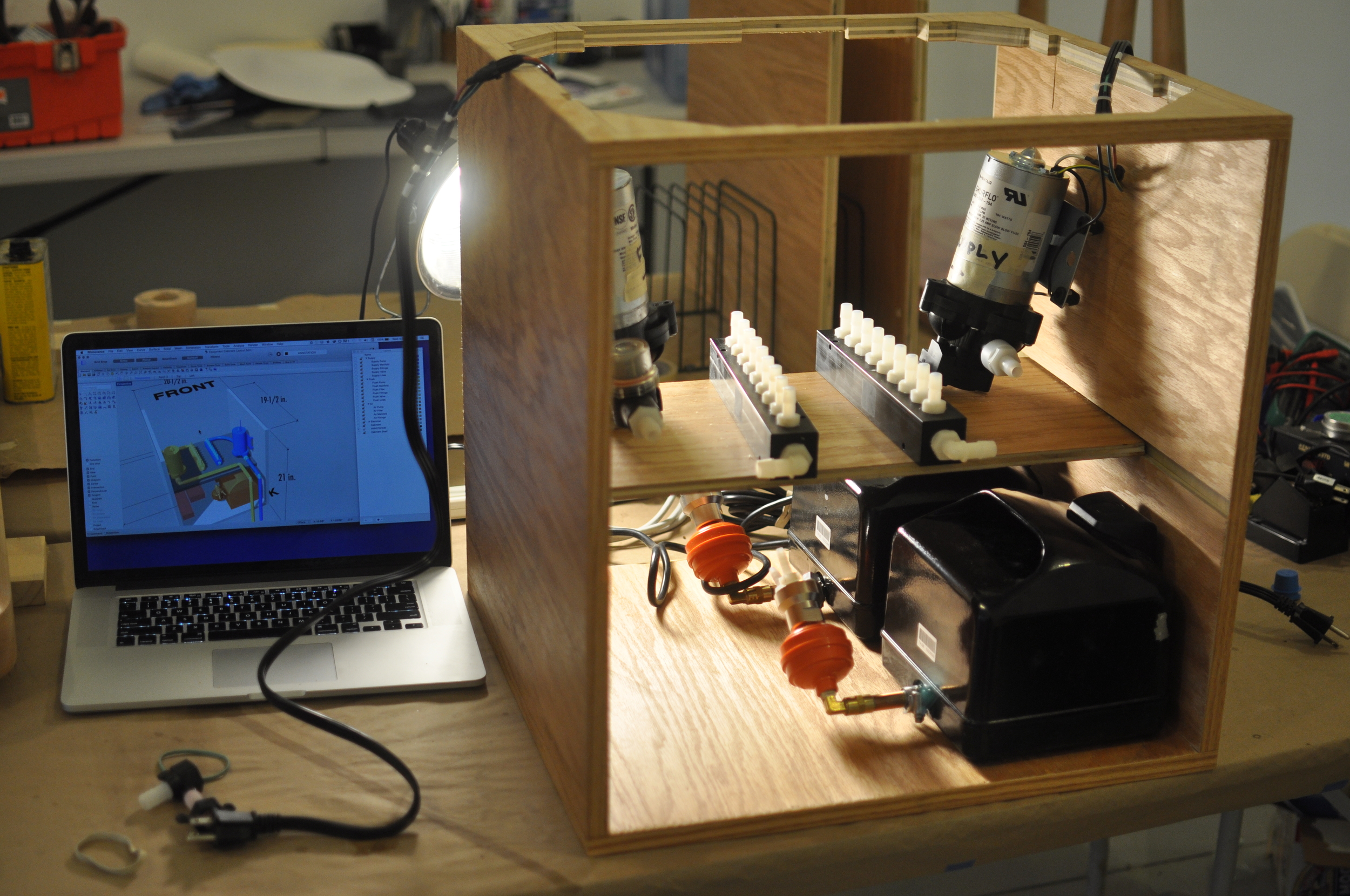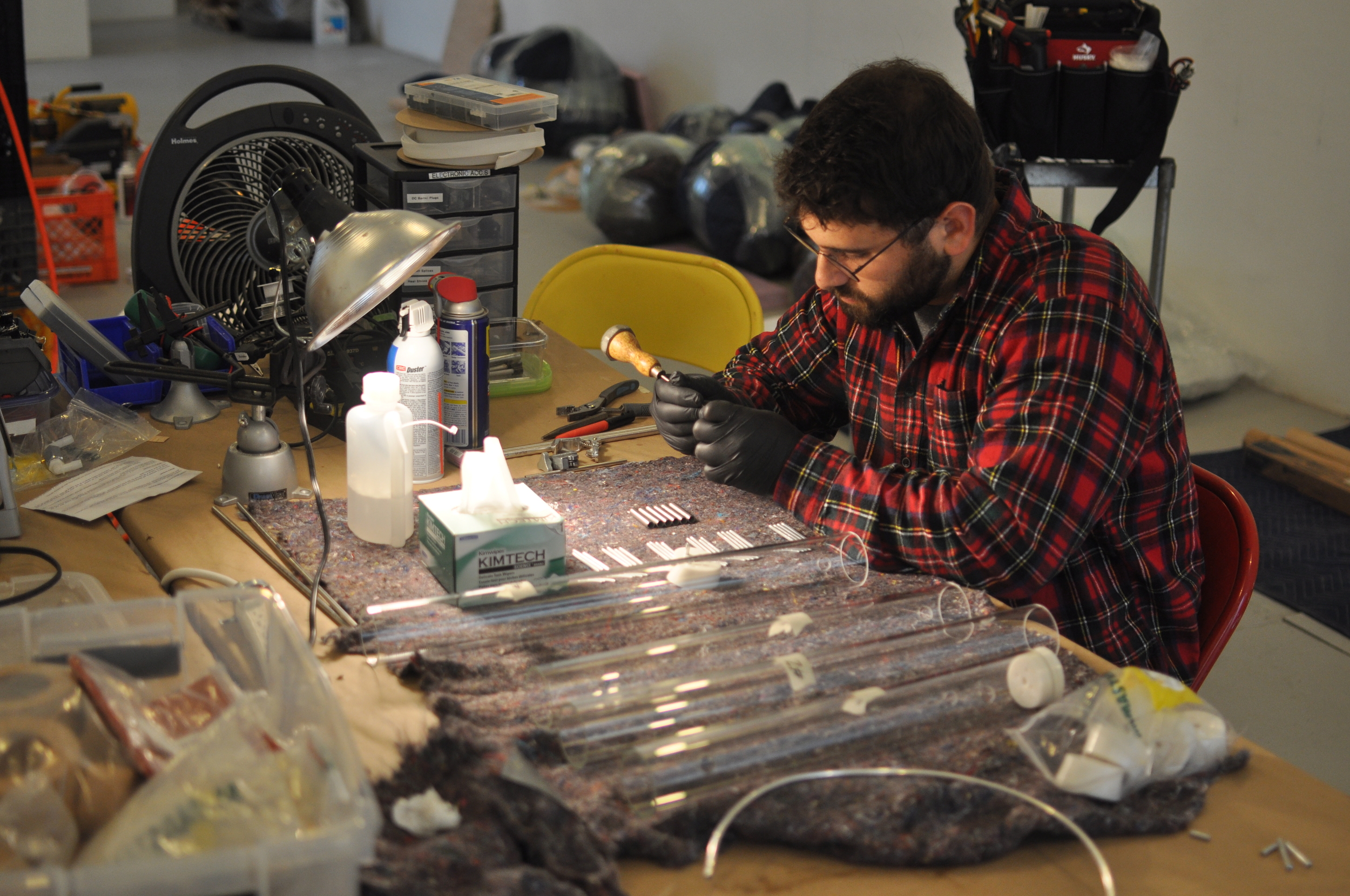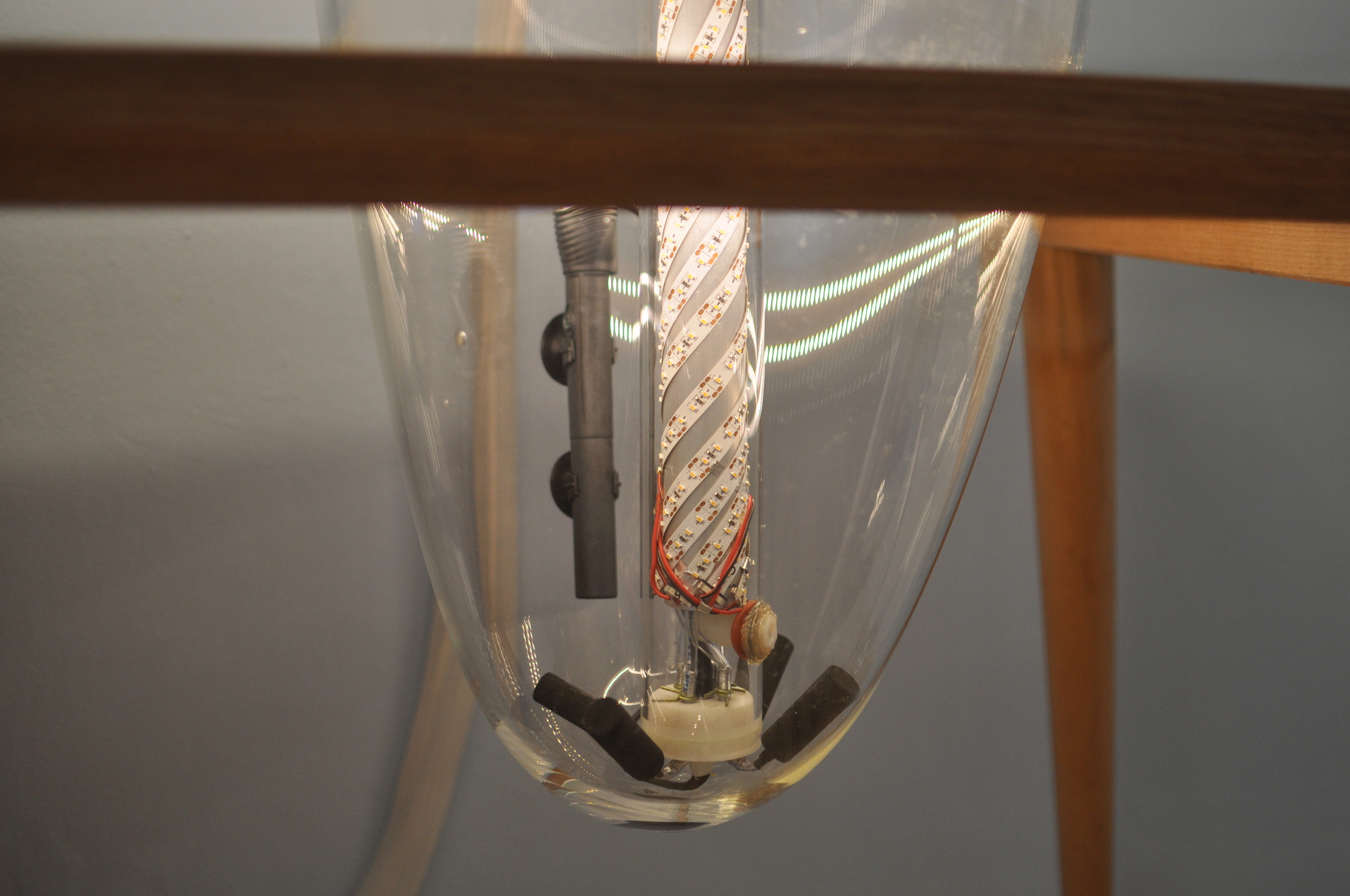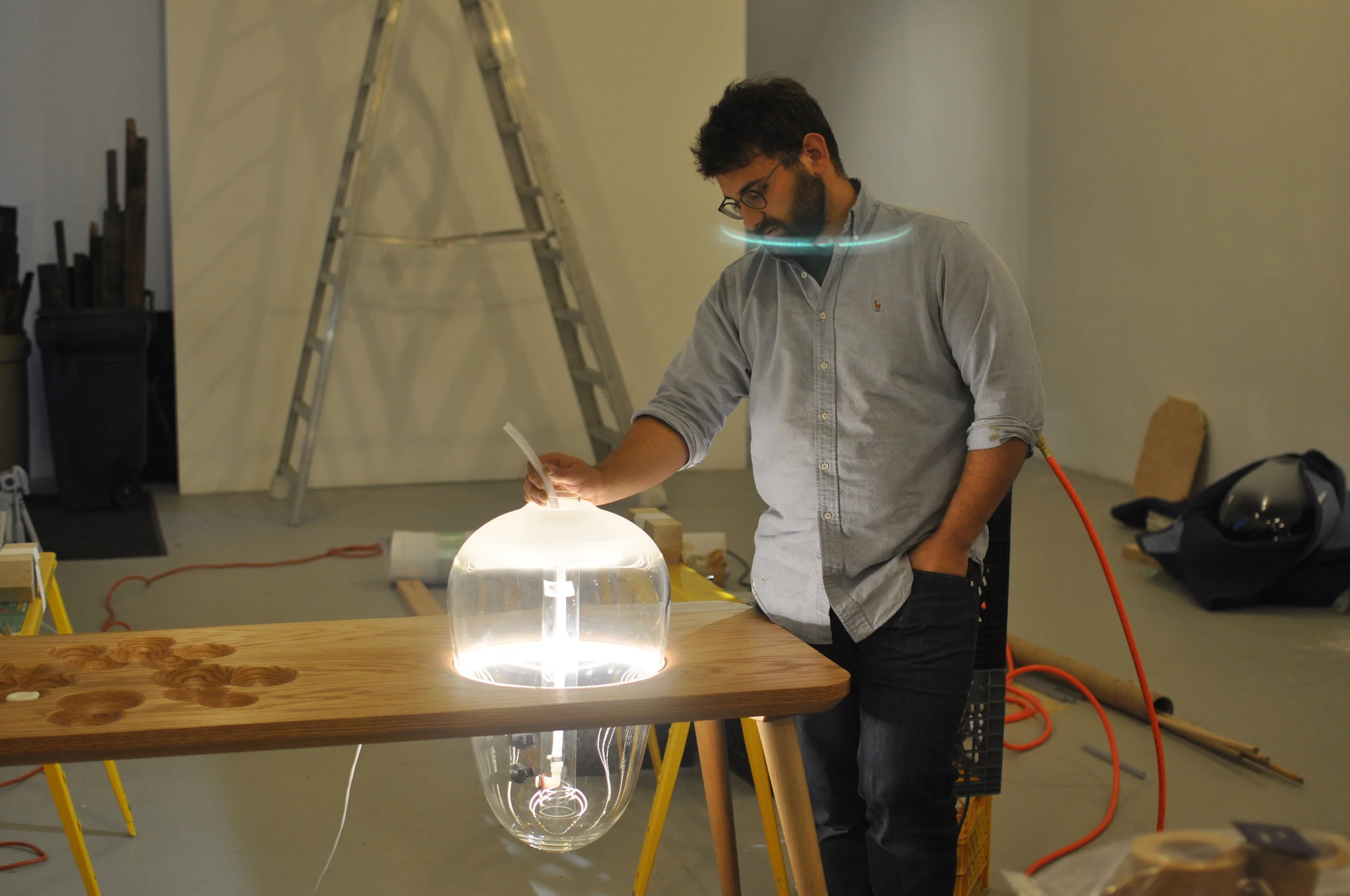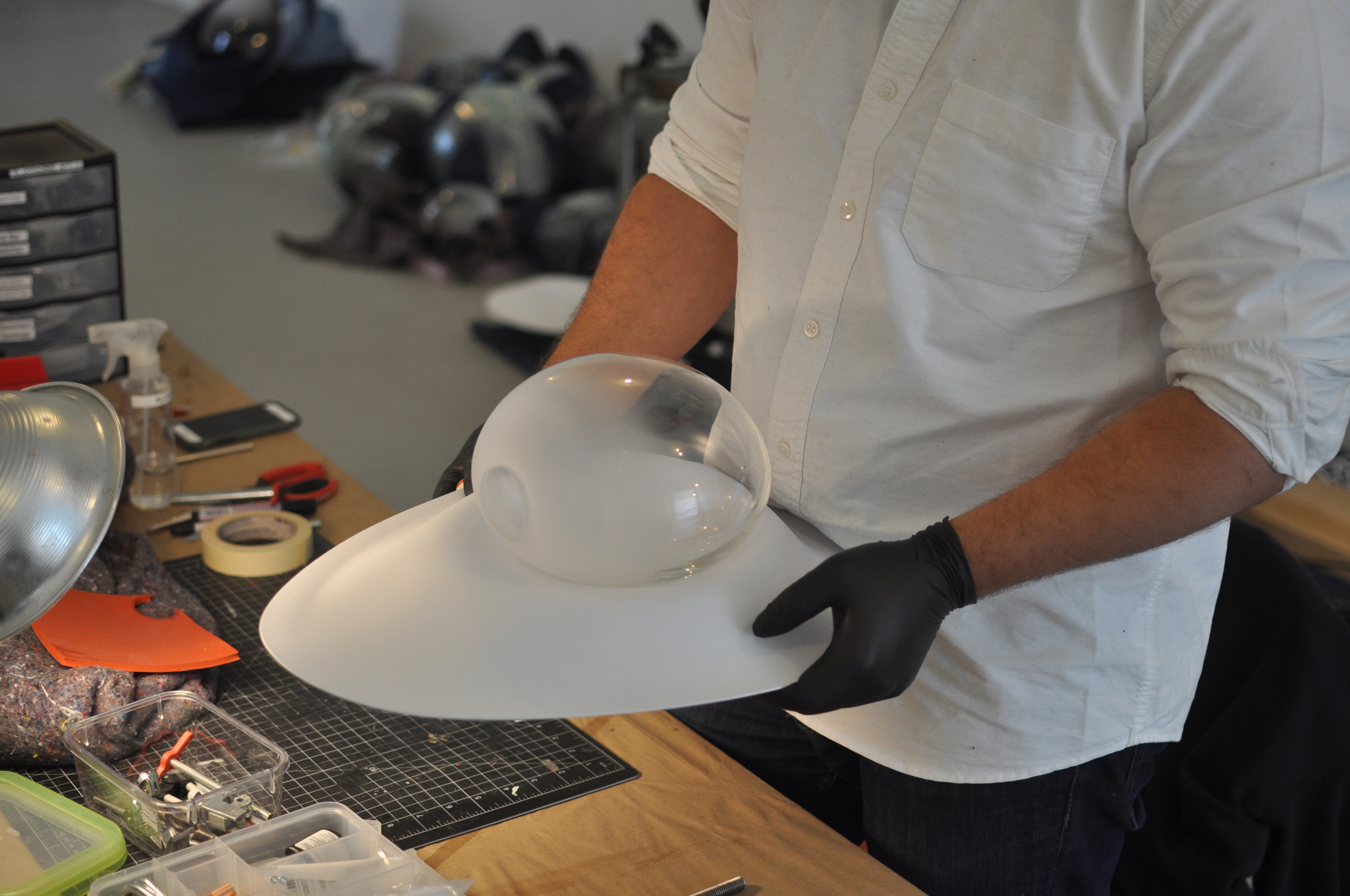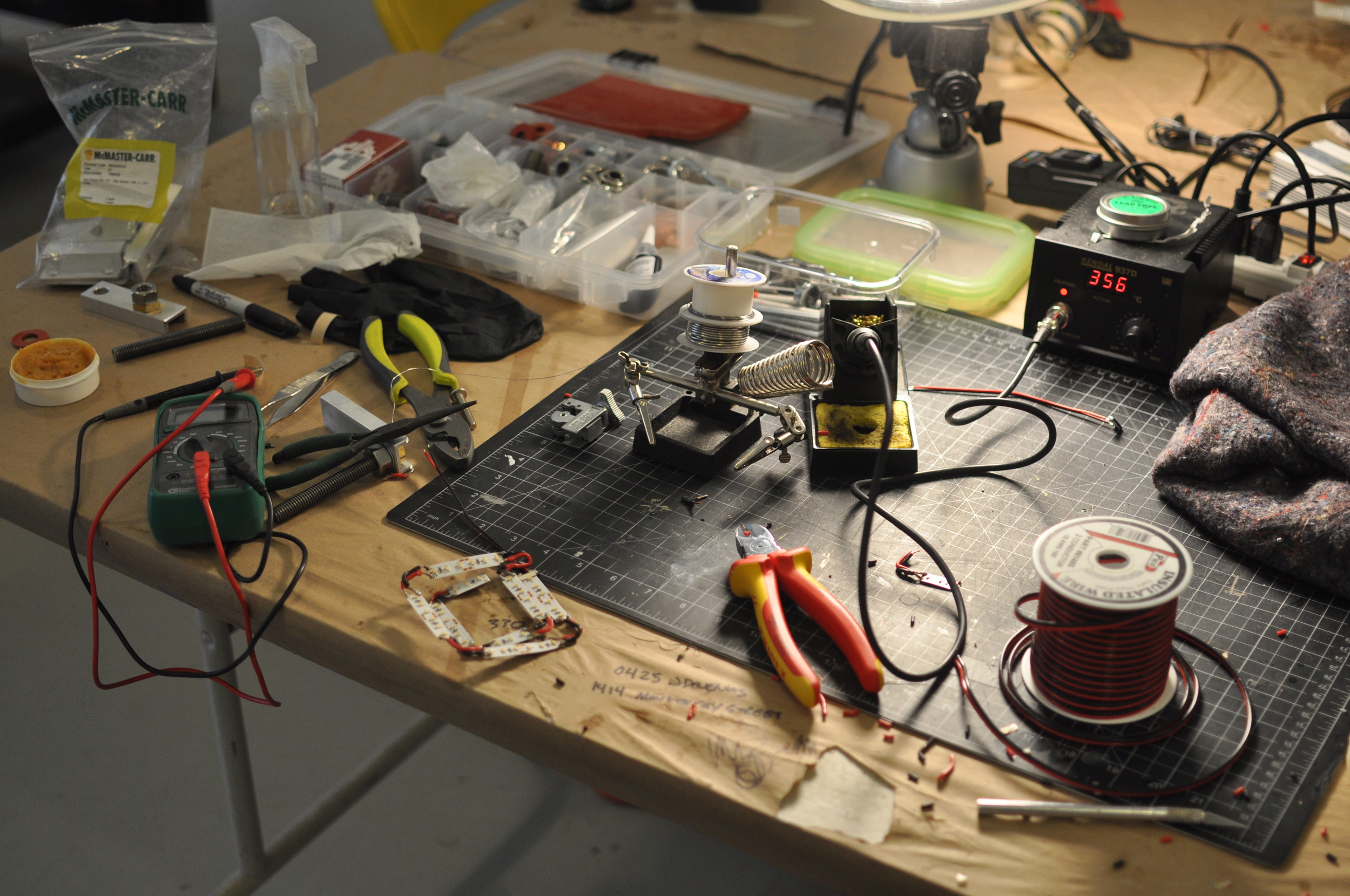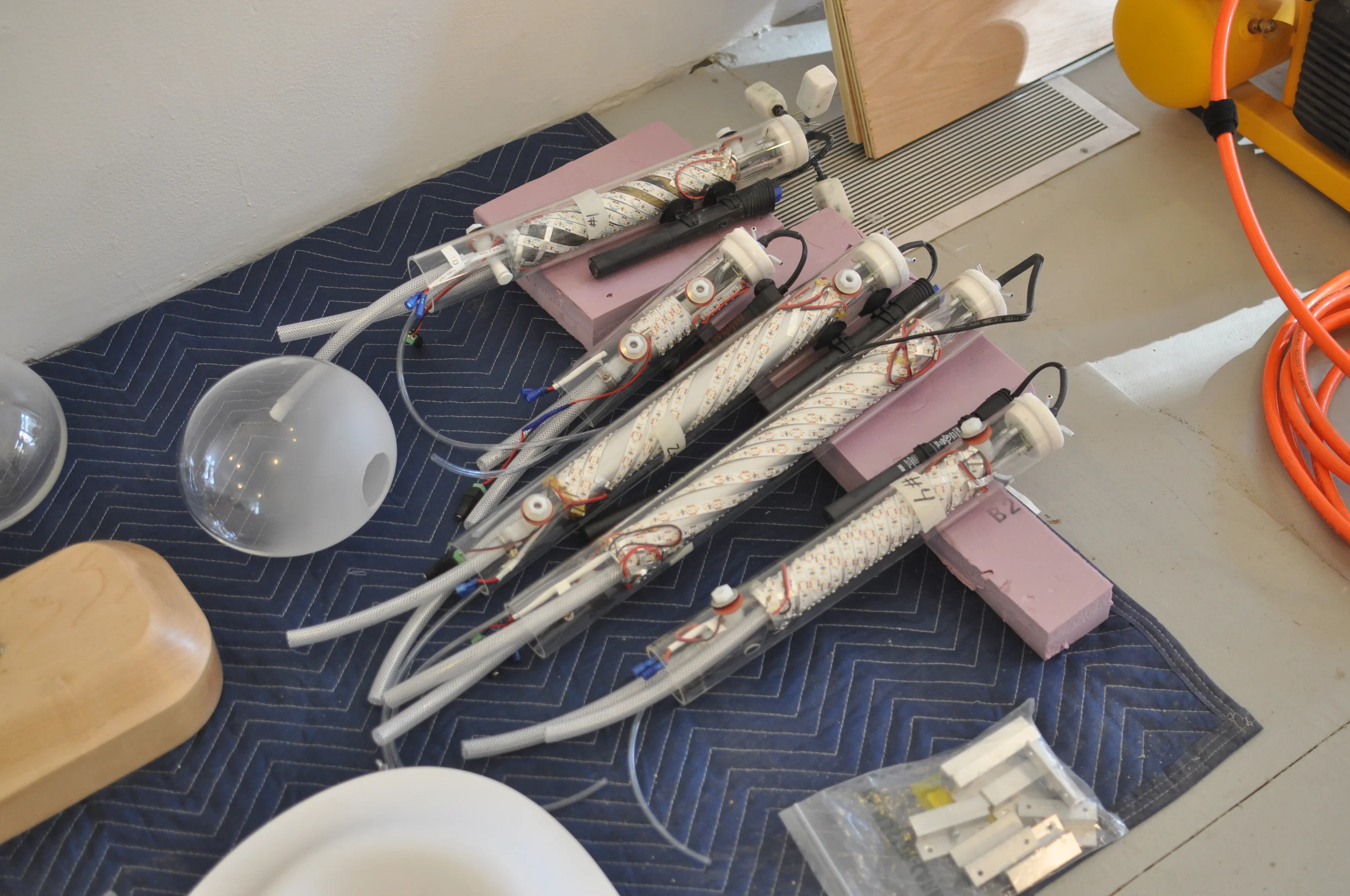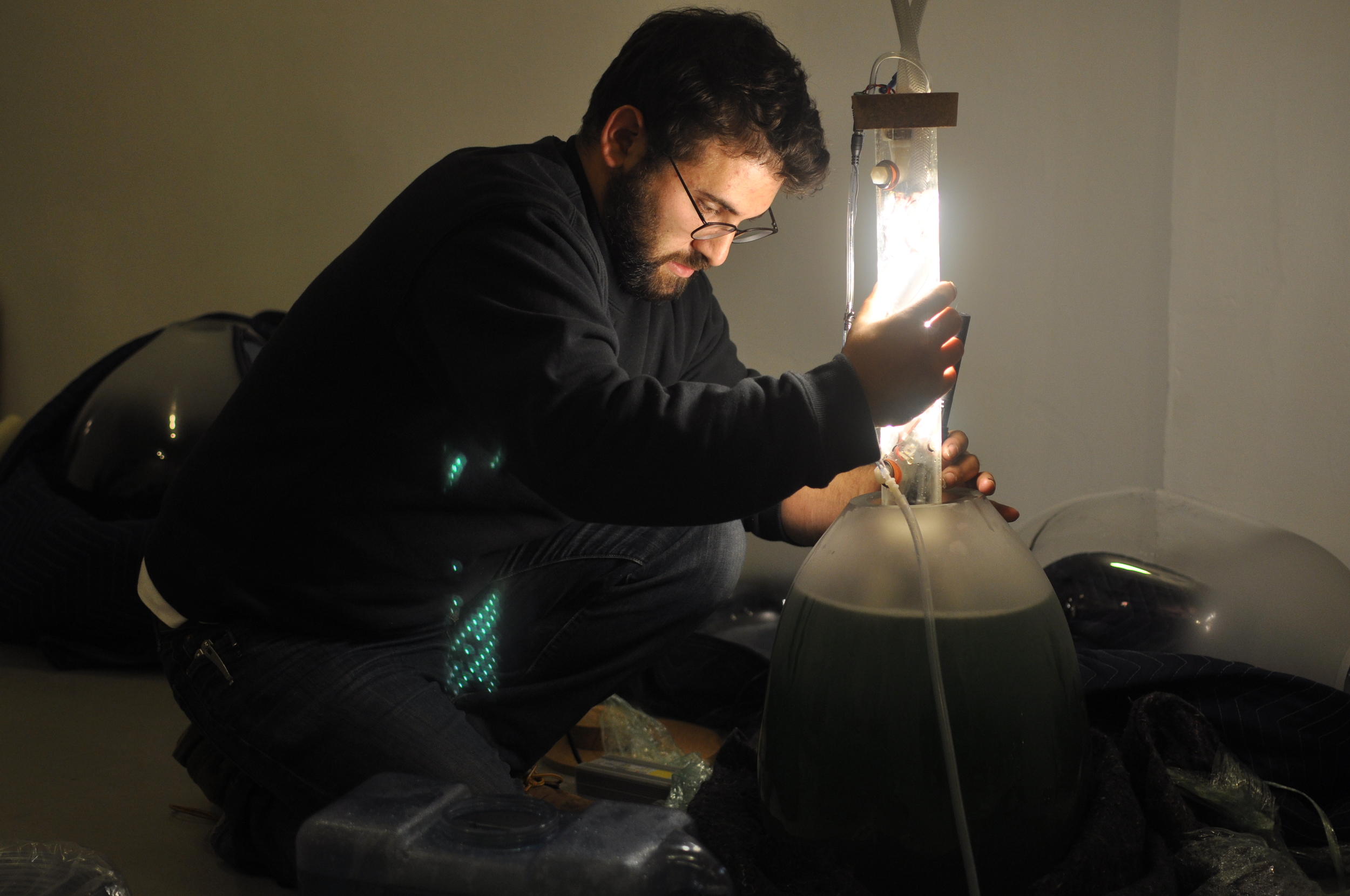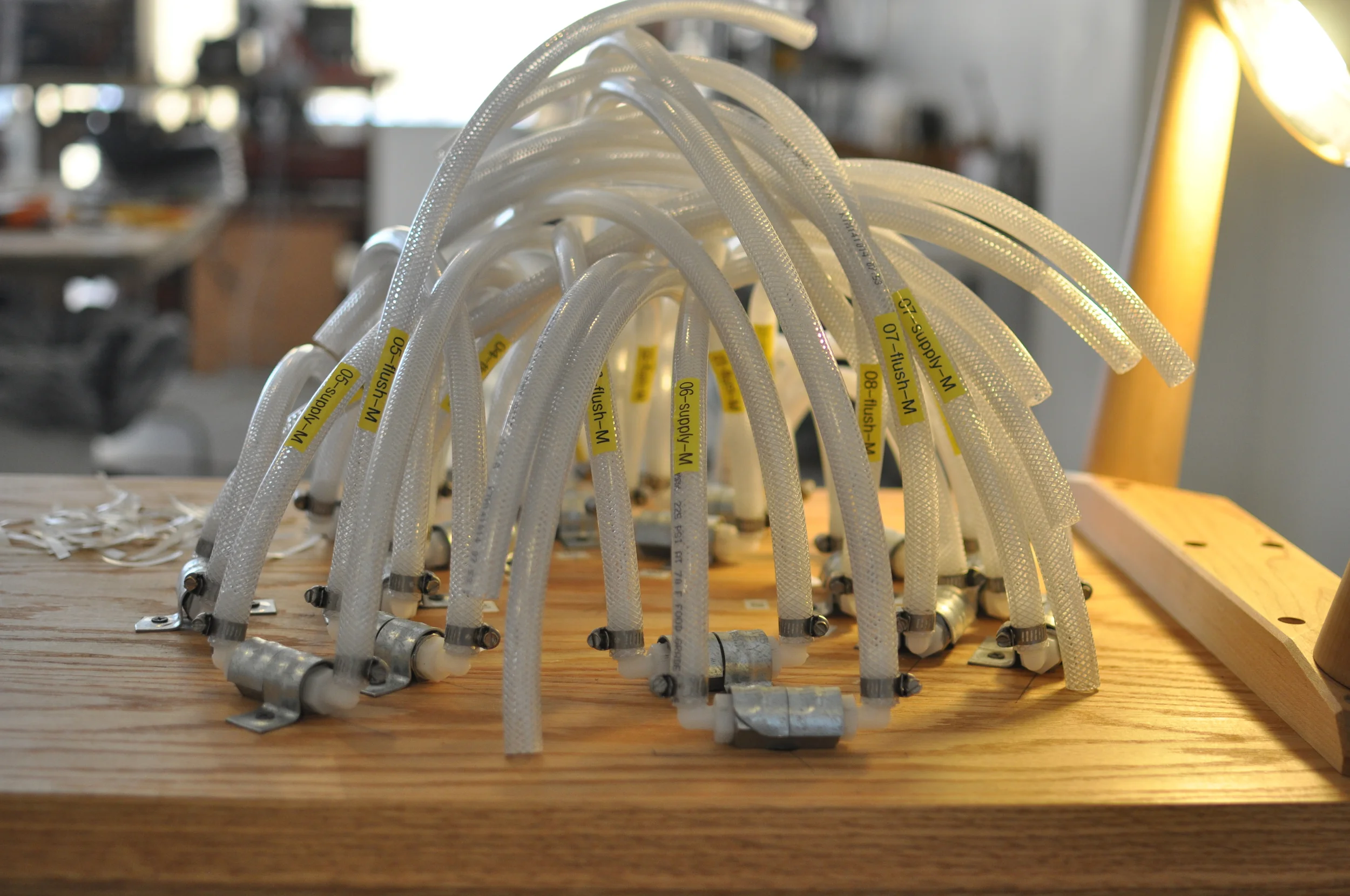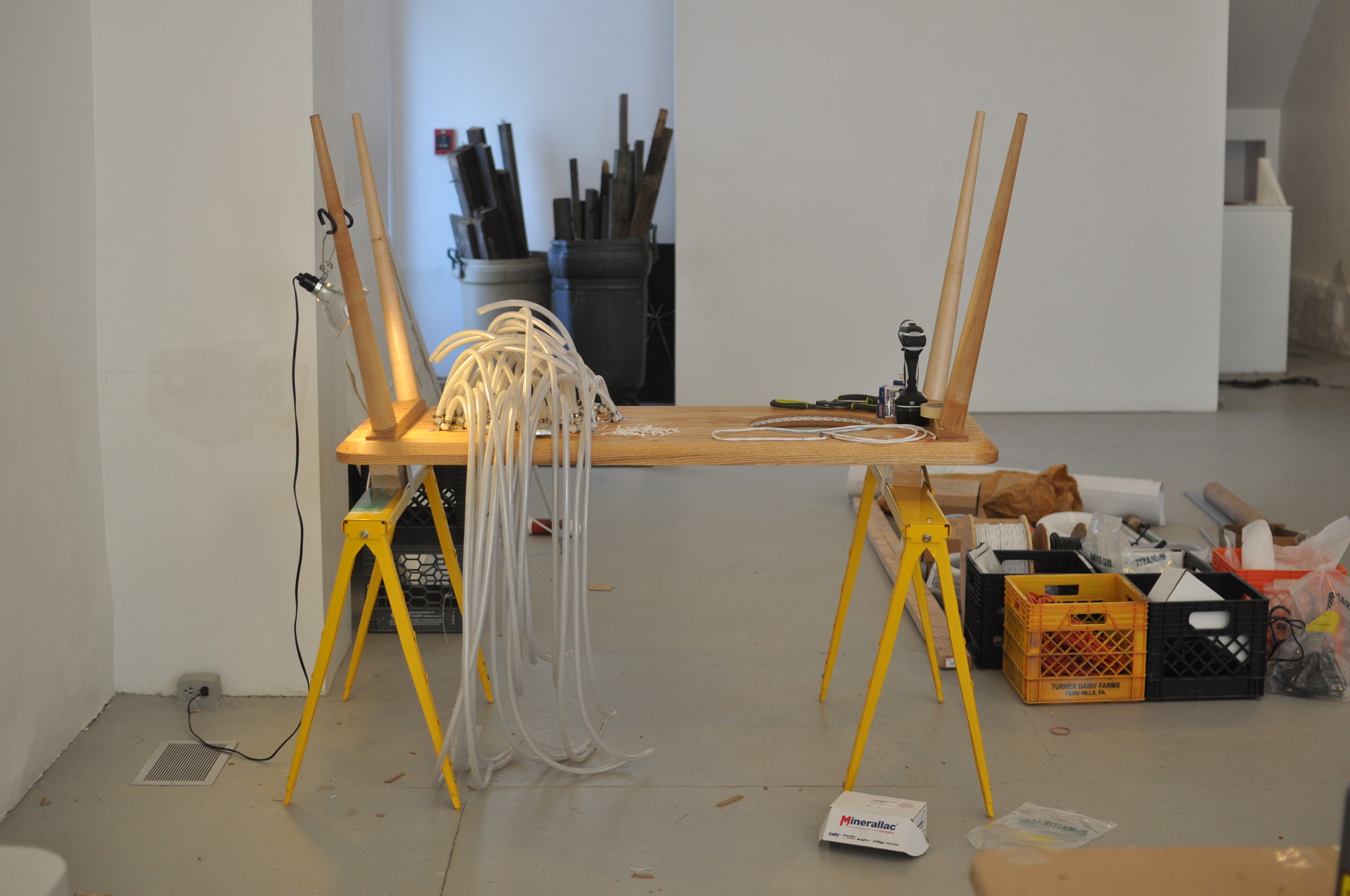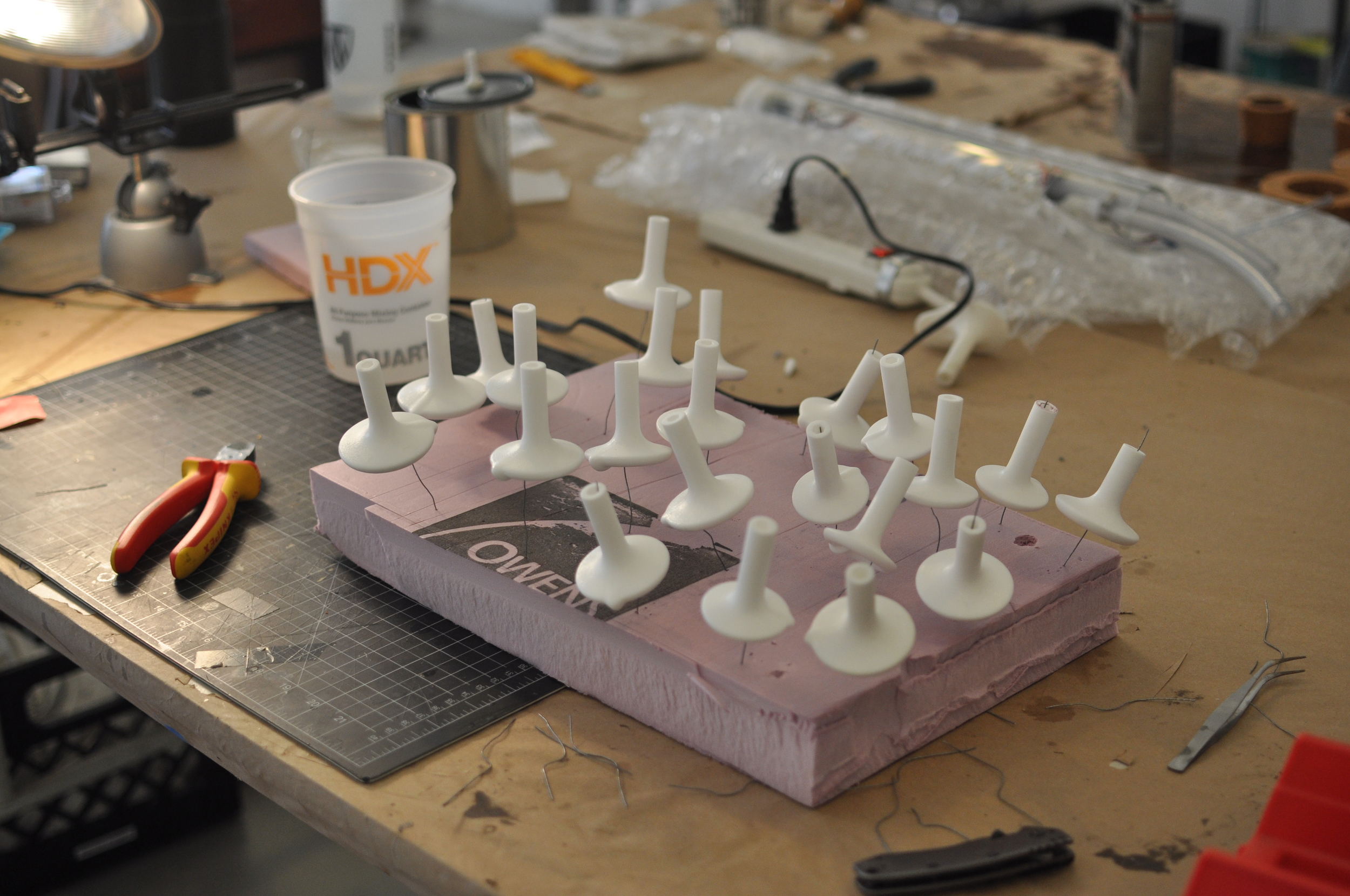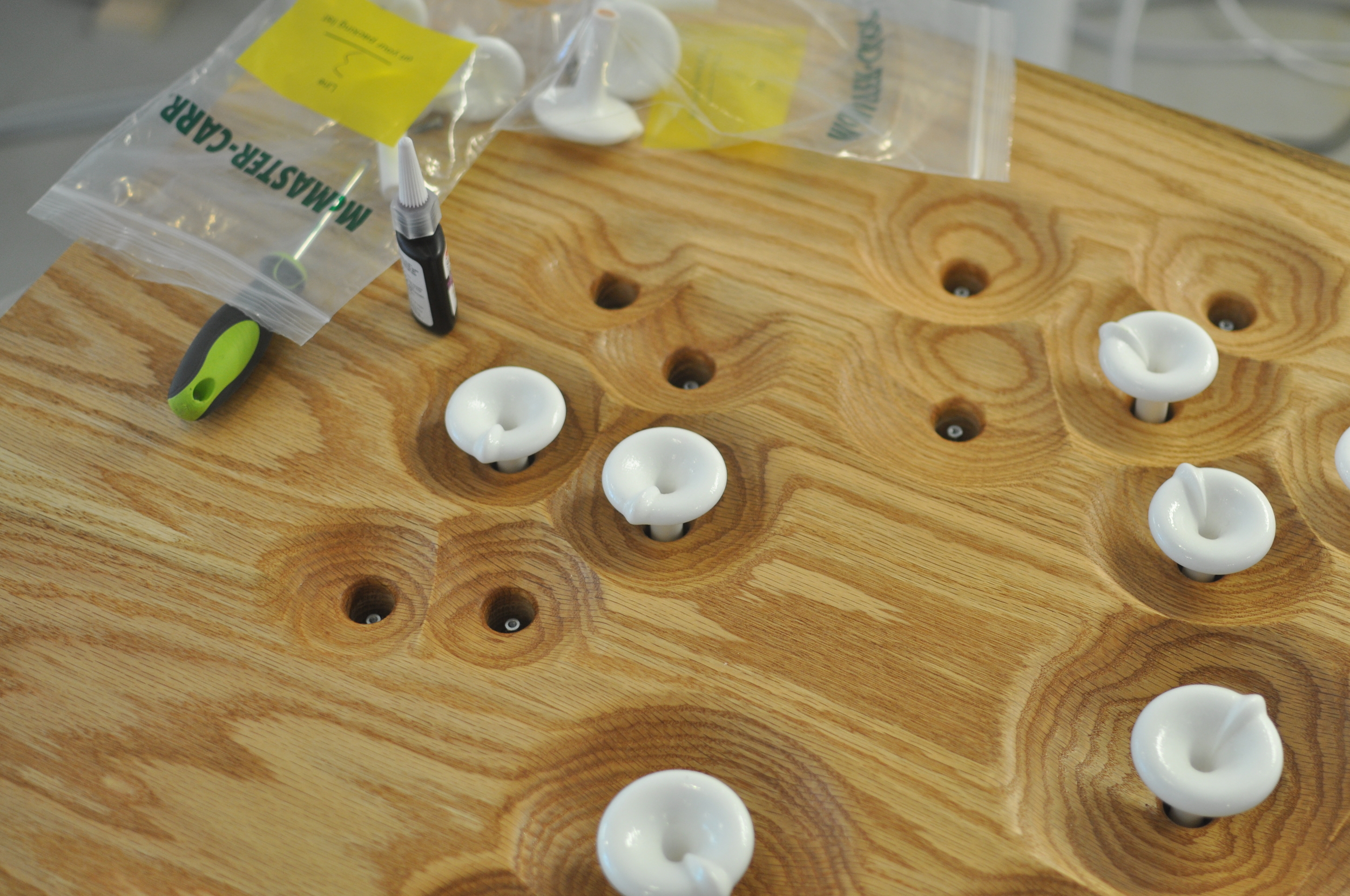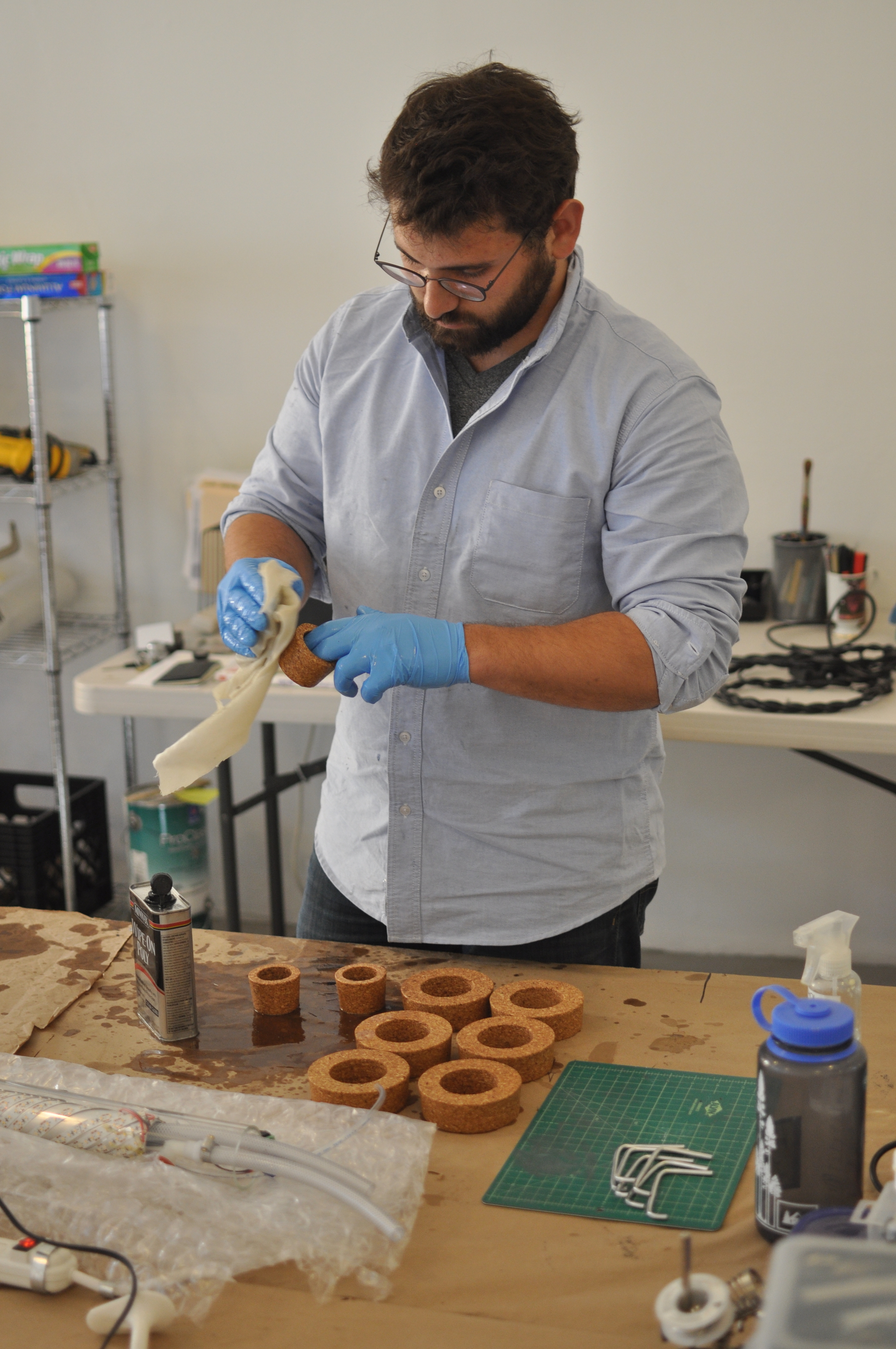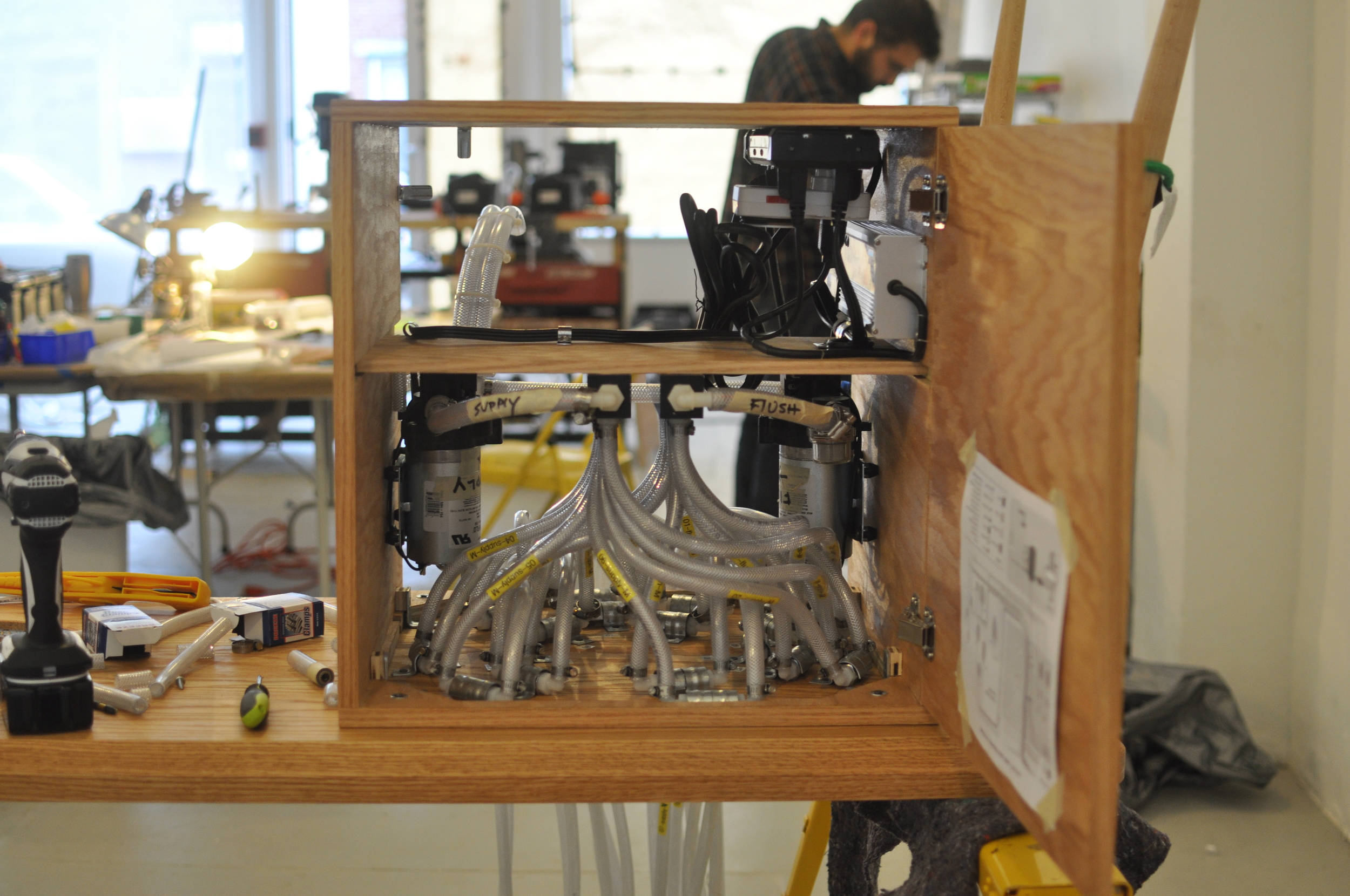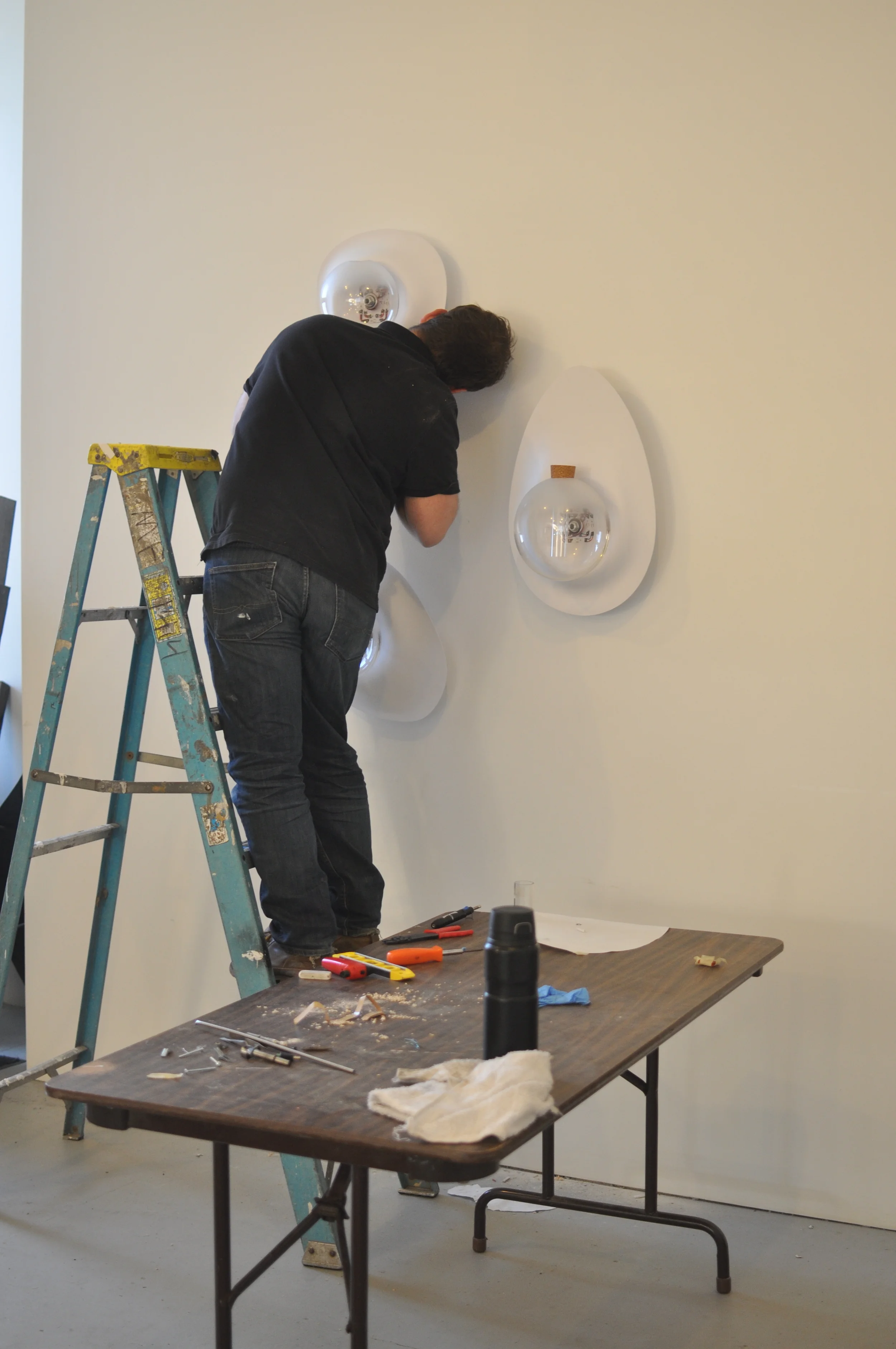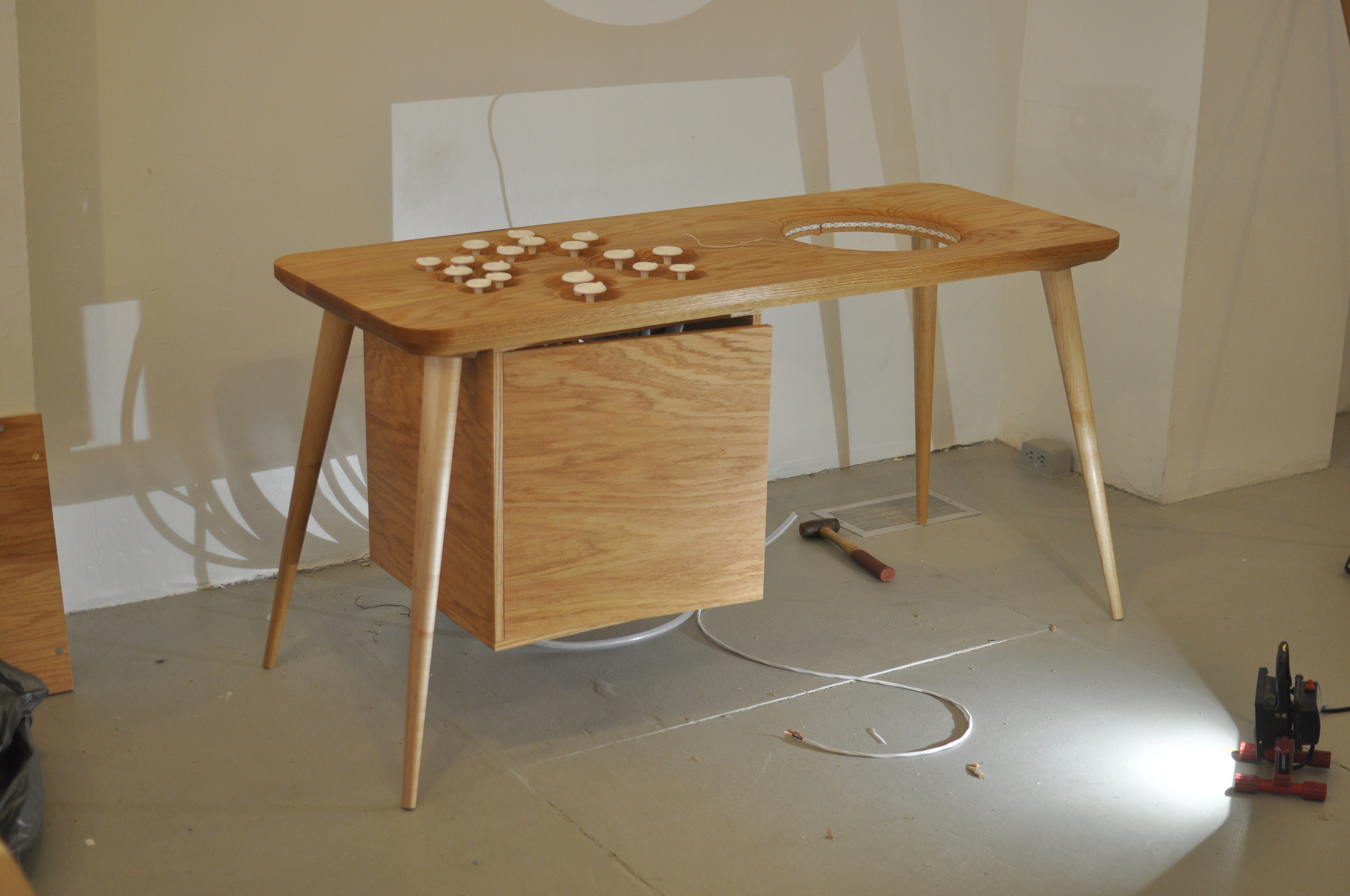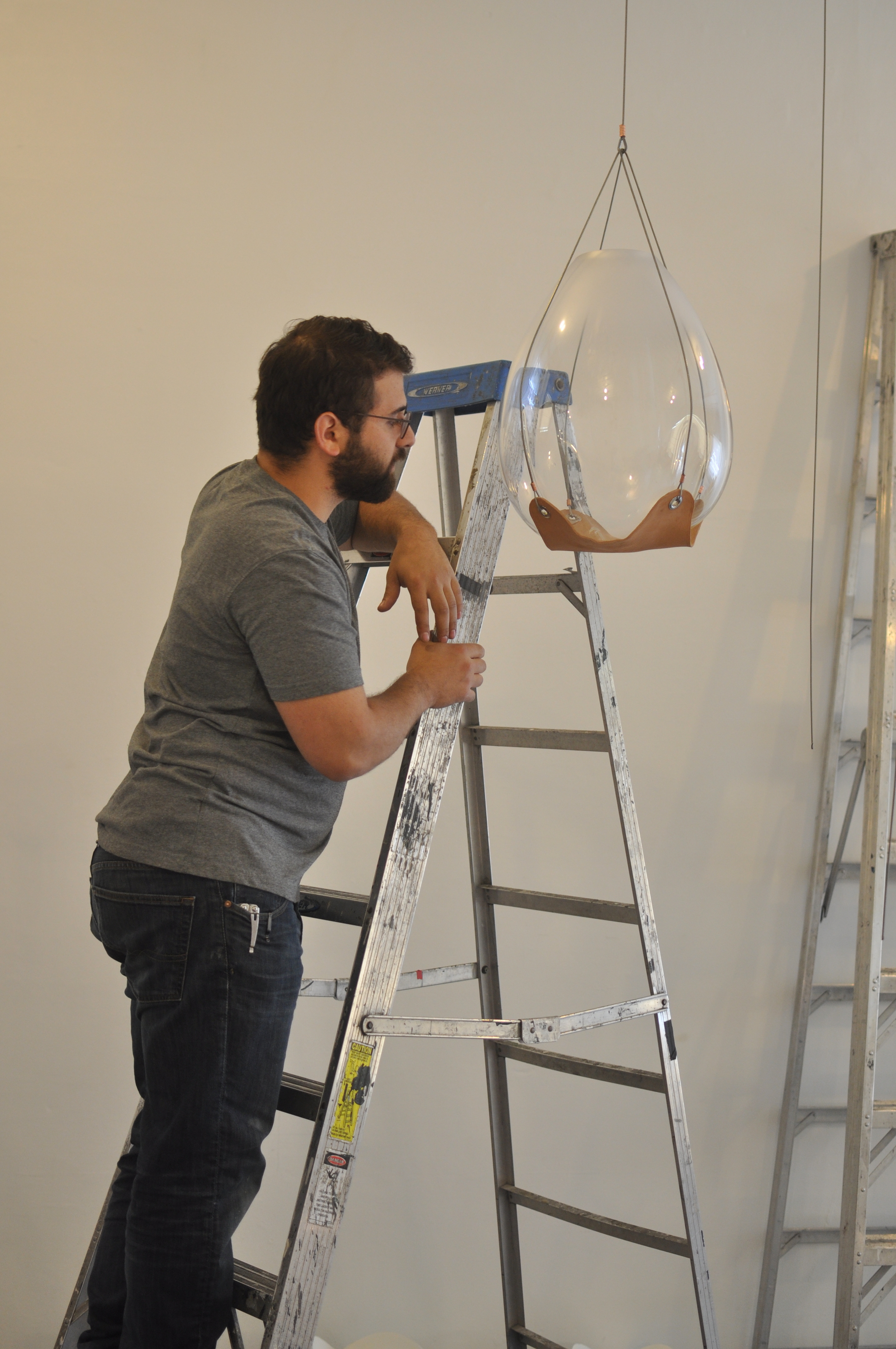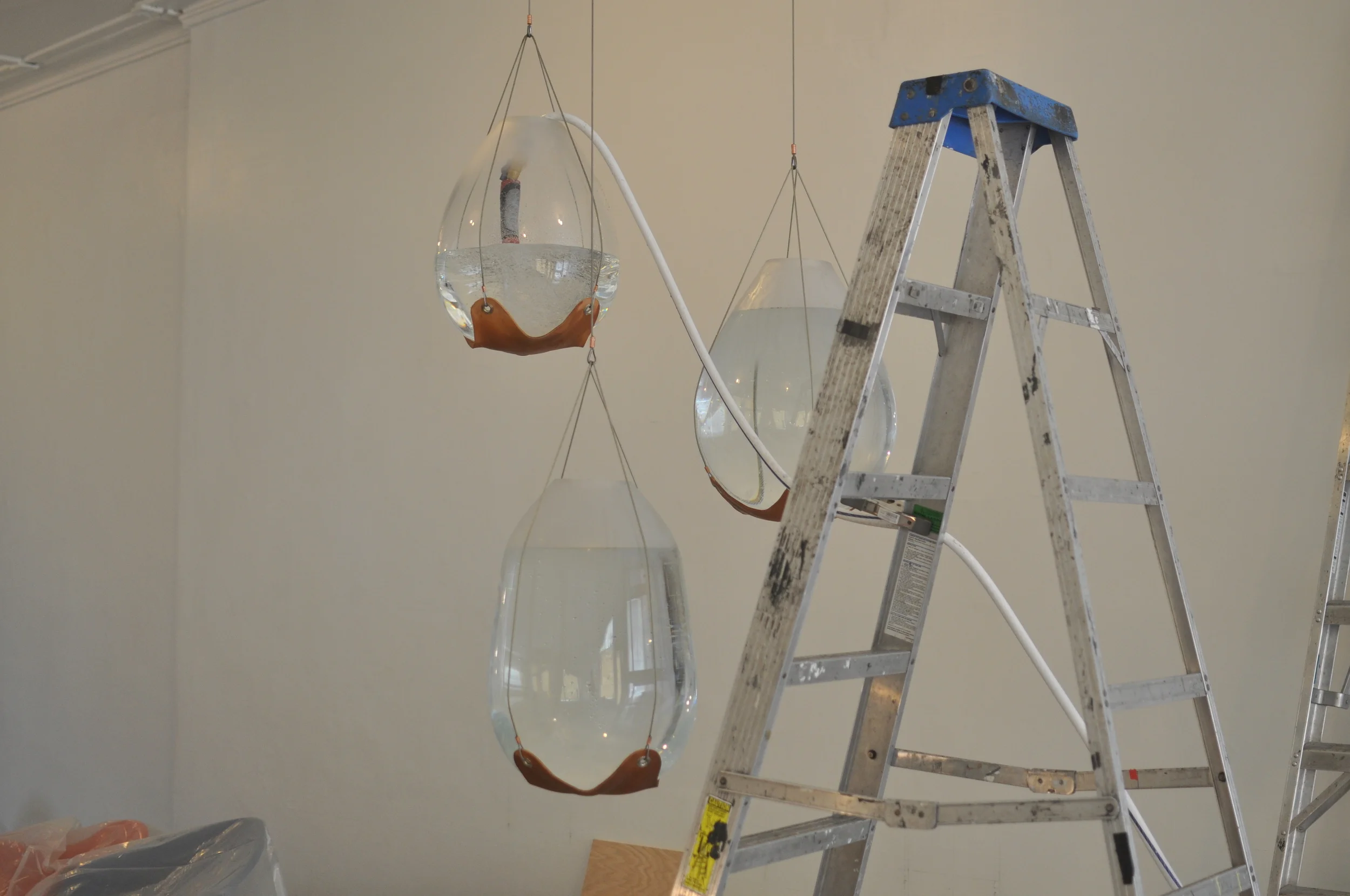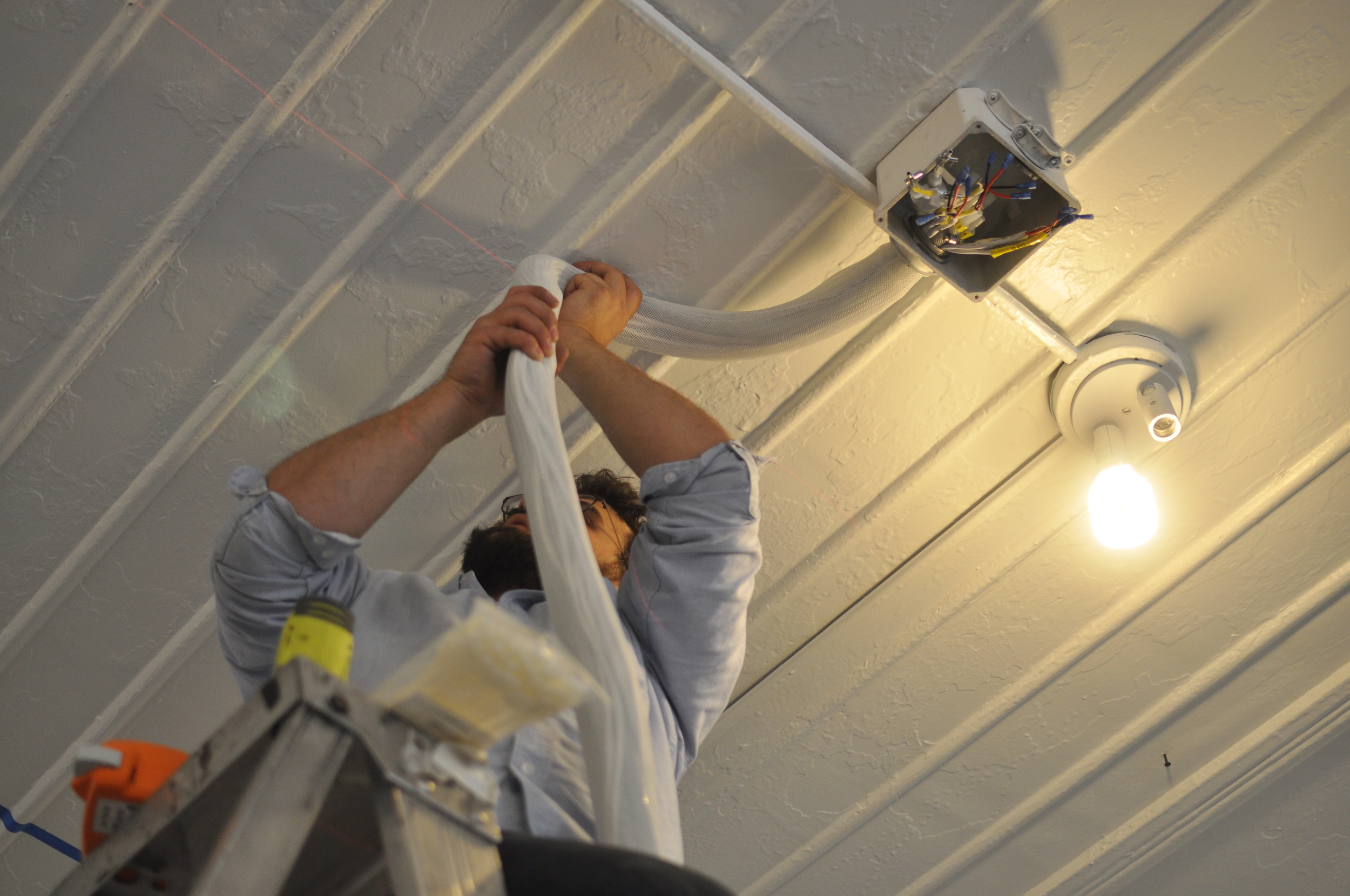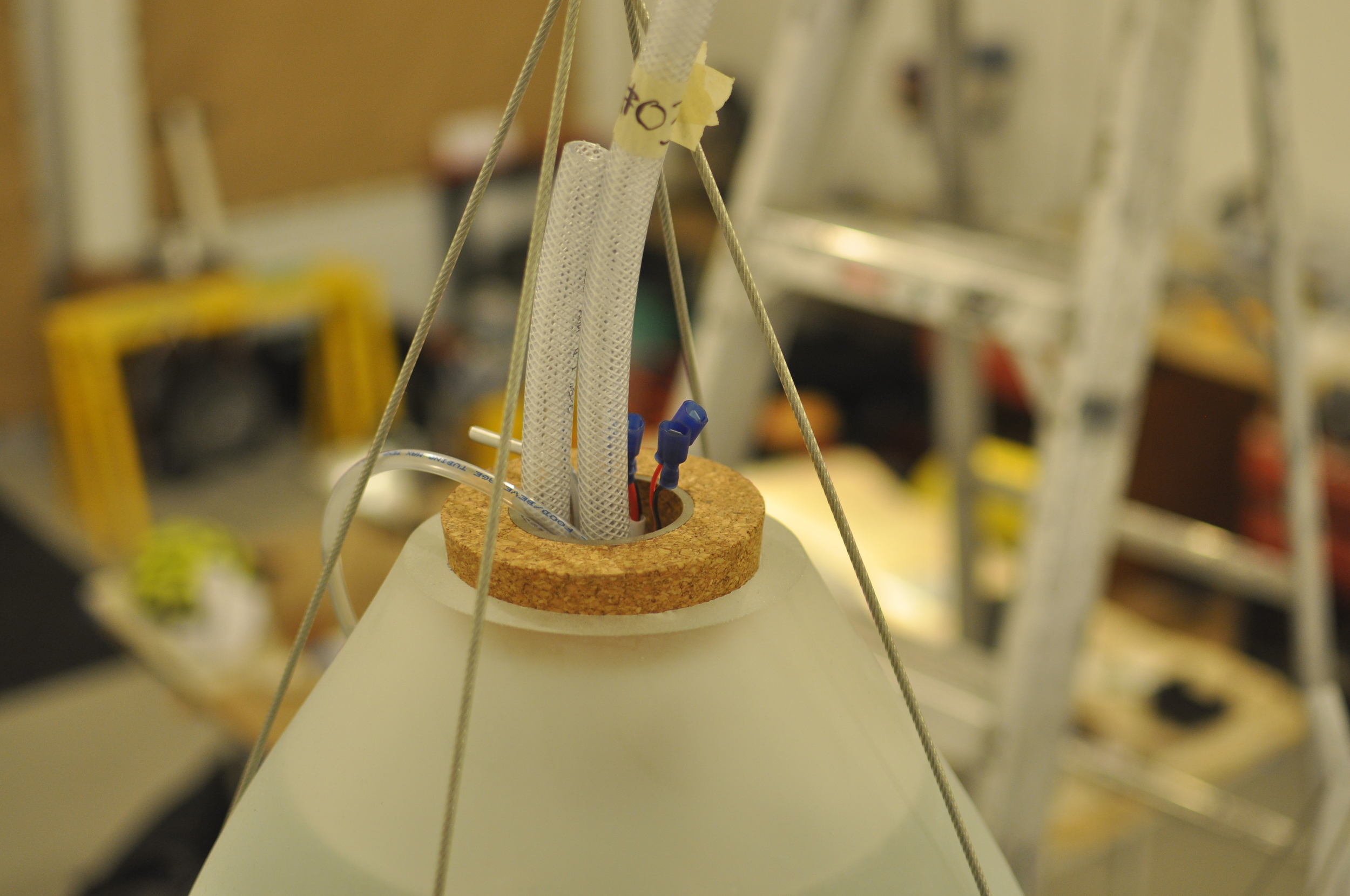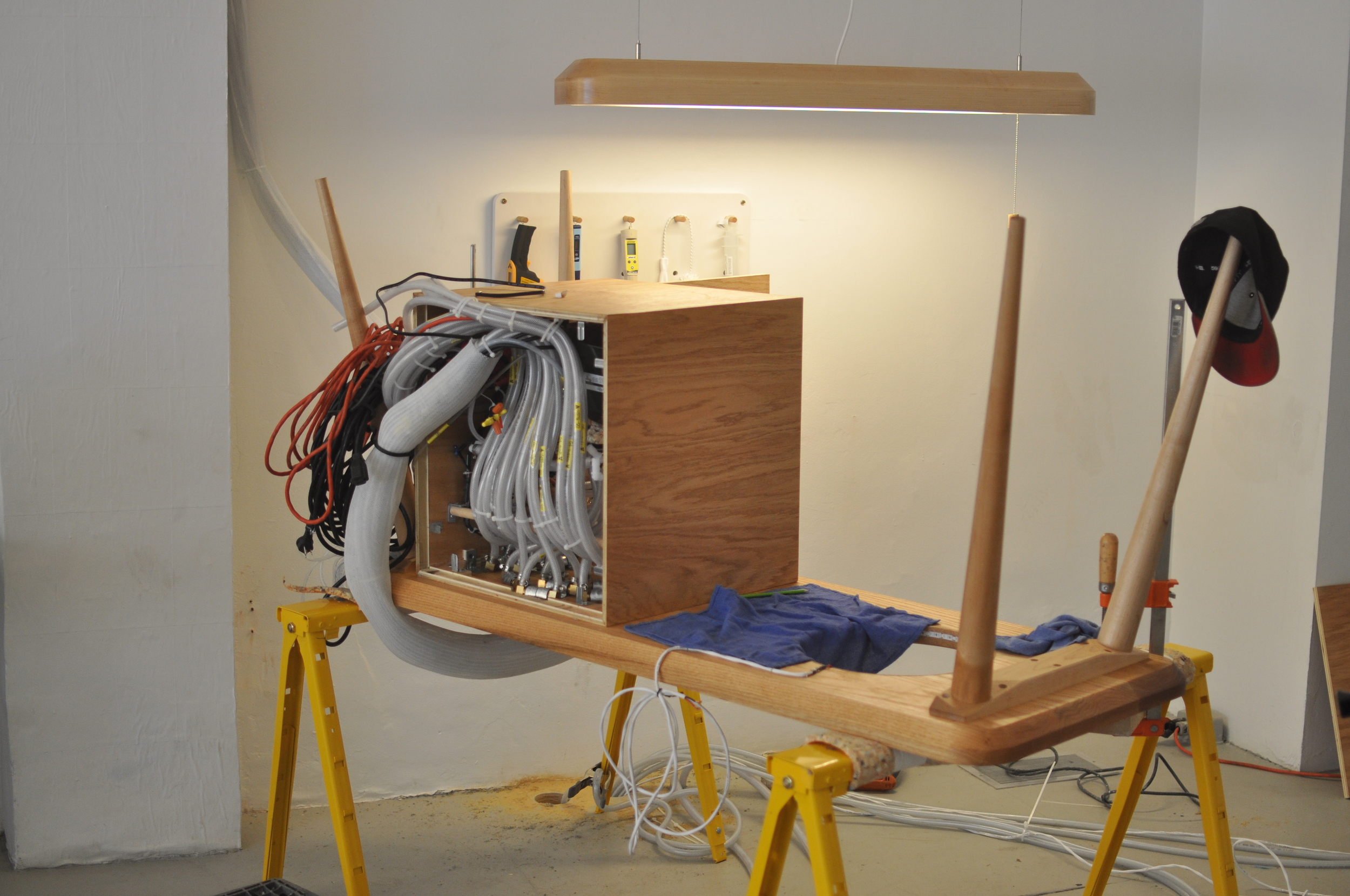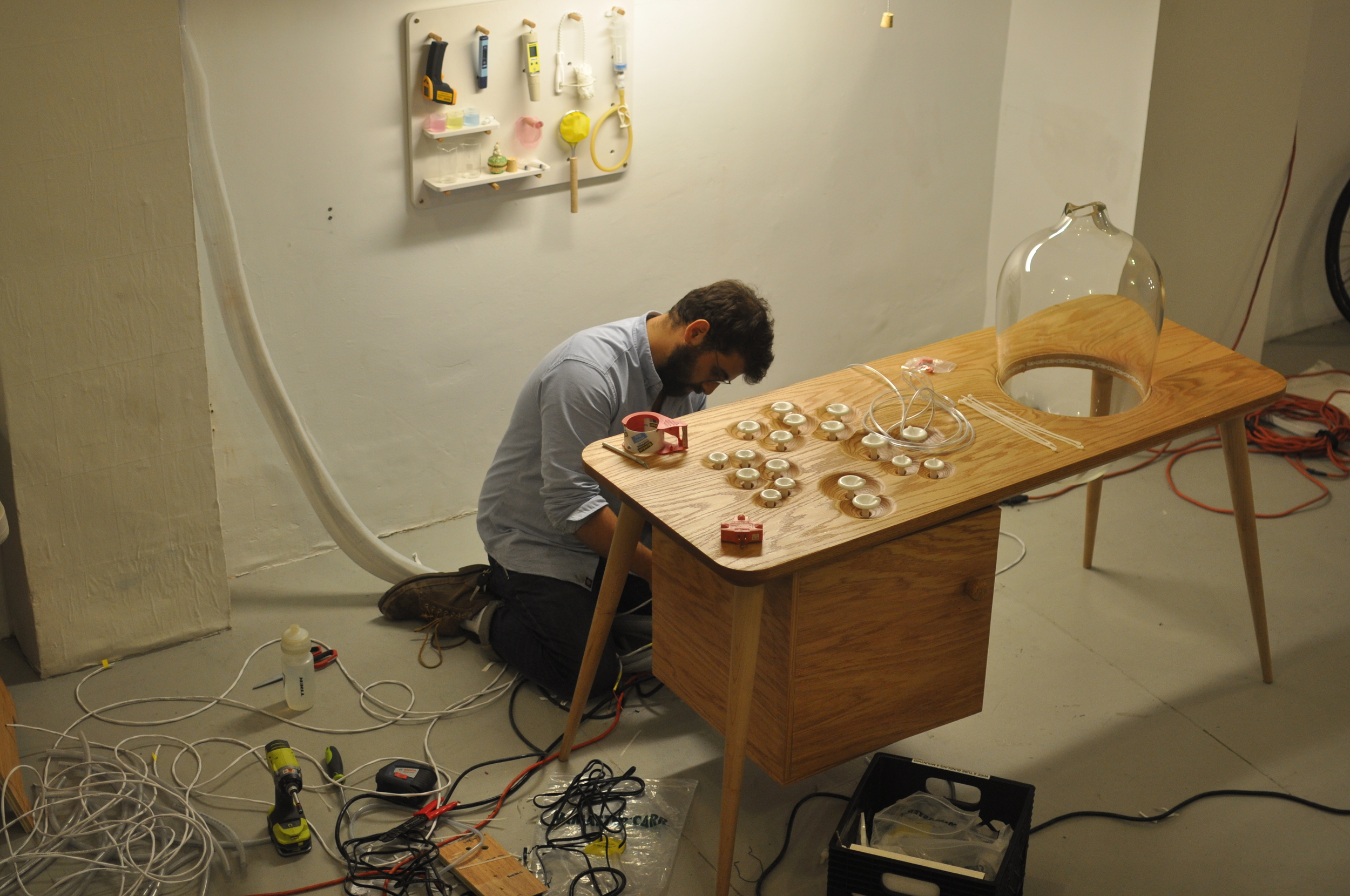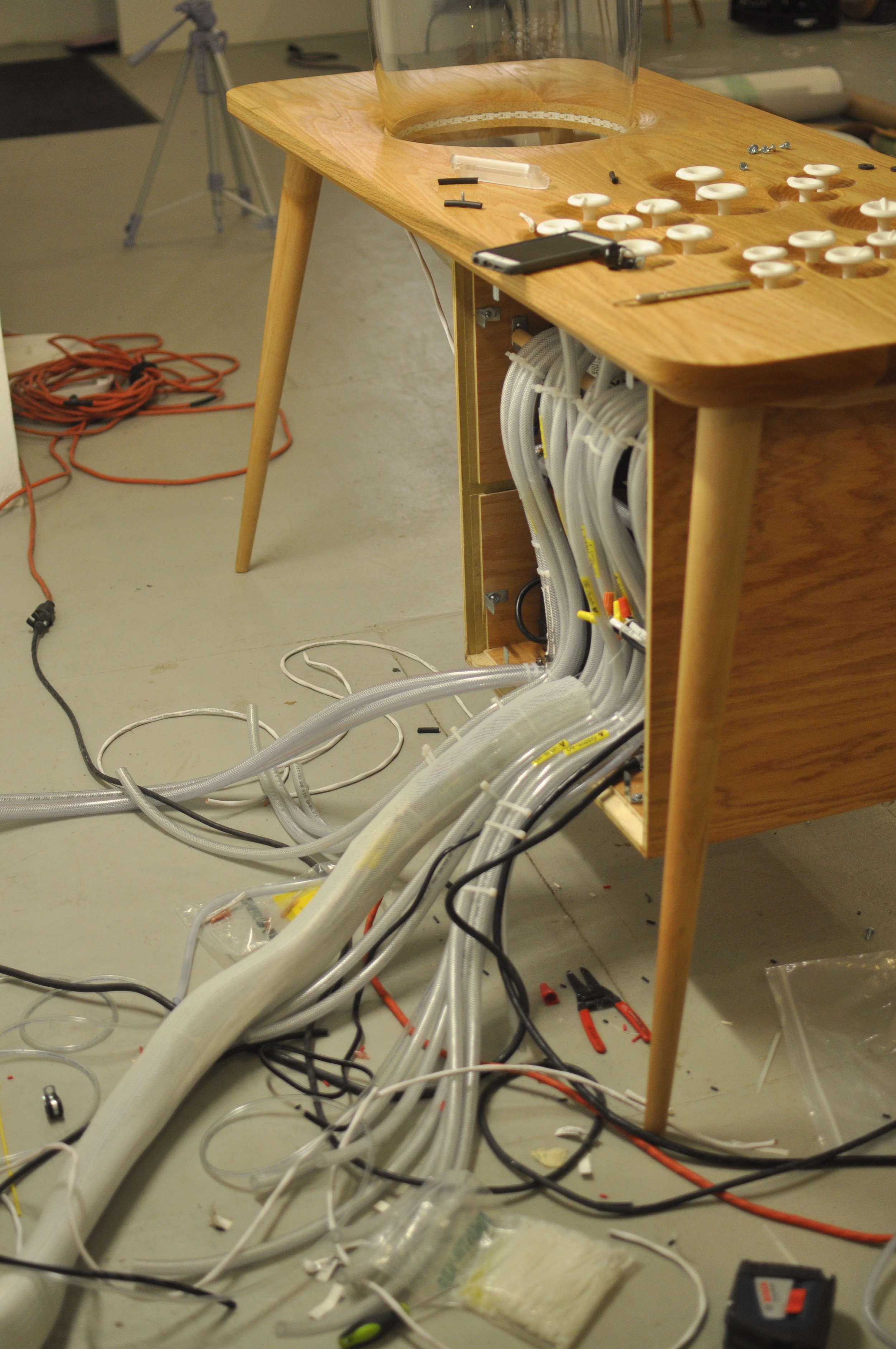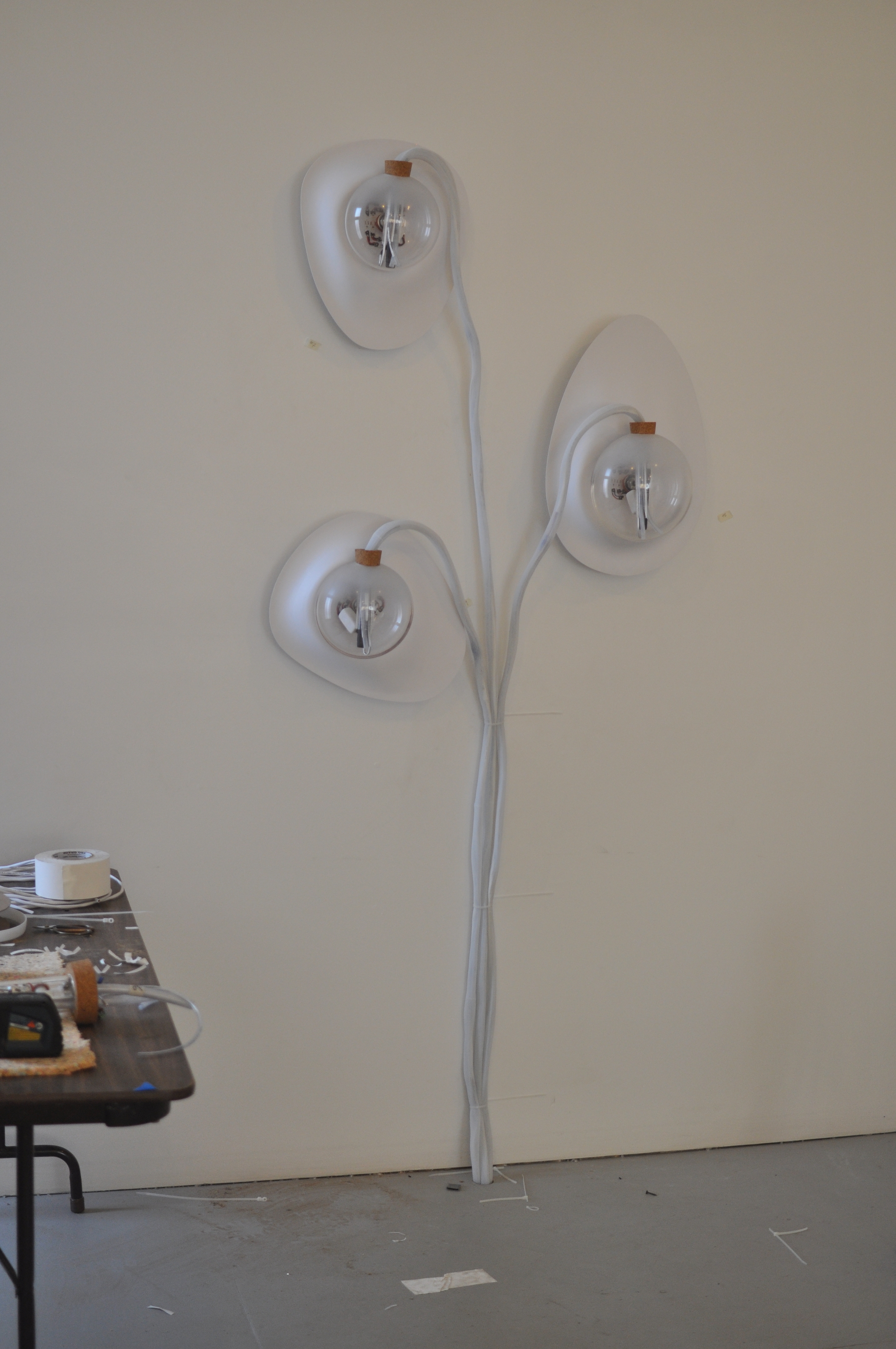Living Things
Mattress Factory Museum
Designed: January - May 2015
Installed: May 2015 - April 2016
In collaboration with Jacob Douenias
Living Things is an installation which explores symbiotic living with beneficial micro-algae through a series of three vignettes of a home environment.
Featured on The Creators Project, Fast Company, Food & Wine, Domus, Wired.de, Inhabitat, and others
This installation contains furniture and furnishings of a possible and not too distant future where the symbiosis between human beings and microorganisms is externalized and celebrated in the built environment.
We are celebrating the beautiful qualities of the beneficial micro-algae by integrating them into unique yet familiar forms. This exhibits challenges visitors to consider what the future of the domestic environment may become, especially in the context of the precarious agricultural and energy needs of a ballooning population.
Microalgae are some of the most ancient and prolific organisms on earth. They are single-celled proto-plants without roots, stalks, or leaves. Despite accounting for less than 1% of the Earth’s total biomass, microalgae drive the biological pump which maintains our atmosphere and the balance of carboniferous matter theirin. The energy dense and nutrient rich material left behind by these microorganisms remains an almost entirely untapped renewable resource by humans.
“How do people in a home cohabitate with microorganisms? Do you treat them as a pet, a houseplant, an appliance, furniture, or something completely unique?”
We have begun to harness the power of other microorganisms in industries such as waste management, alcoholic beverage production, agriculture, medicine, and more recently biofuels. Microalgae, however, present a unique opportunity to designers. The absence of a superstructure to organize their anatomy allows the liquid suspension in which they live to be treated more like a material than a plant. The plasticity of this living material allows us to create living structures. These living structures recycle light, heat, and carbon dioxide from buildings and their inhabitants into rich green biomass which can be consumed as sustenance, used as agricultural fertilizer, or converted to biofuel.
Through an installation of domestic vignettes in which Spirulina algae are cultivated in custom glass bioreactors designed as household furnishings, Living Things creates a symbiotic environment between people and microorganisms.
The three vignettes; a living room, a dining room, and a kitchen/control center each espouse a different character, and the living vessels function differently in each space. The morphologies of hand-blown glass vessels function both as lighting and heating elements for the human occupants, and high functioning photobioreactors which provide heat, light, agitation, air supply, nutrient and waste control to the living algae inside. This life support system is connected through just under ½ mile of wiring and plumbing to a hybrid between a scientific workstation and a media cabinet. At this workstation each of the nine vessel’s life support systems can be adjusted individually. The 3D printed nylon knobs embedded in the surface of this workstation actuate eighteen valves which allow for the harvesting of Spirulina when the culture becomes dense enough, and the supply of fresh liquid media to each vessel. The cabinet contains the pumps, tubing, manifolds, LED drivers, air pumps, heater connections and filters which comprise the heart of the life support system.
The microorganism Spirulina was selected for the installation for its ability to thrive in very alkaline waters, where most bacteria cannot live. As the algae grow very quickly, the character of each vessel changes continuously. The liquid becomes a deeper rich green and absorbs more and more light from the internally lit vessels. Individual Spirulina filaments which are just barely visible to the naked eye (⅓ of a millimeter long) can be seen mixing inside the glass vessels. Once filtered, the algae can be dried from a viscous paste into a fine, green powder which is over 60% protein by weight and is mostly flavorless with a hint of grassiness. During the course of the installation, we are working with bartenders and chefs to create drinks and dishes which feature Spirulina at special events held in the installation
The Process
Jake and I designed and fabricated the entire exhibit on our own, with help from the Mattress Factory to handle the installation. Jake was in charge of the functional design of the system and the guts of the bioreactors. I was in charge of the overall aesthetic, though it was collaborative, and I did most of the design and fabrication of the table and the sconces. There were so many moving parts and details it is hard to say what was the hardest or most rewarding part. This is one of my favorite projects because the subject is so interesting, it's fully functional, and I believe in the mission of the Mattress Factory. It was a privilege to be able to make work to be shown there.
Collaboration with Pittsburgh Glass Center
We worked closely with the Pittsburgh Glass Center to produce the vessels for the exhibit. Making glass to this accuracy at this scale was no easy task and I am still so impressed by the craftsmanship and teamwork. It took 5 people to do the hot work for each vessel and there were two more people additionally doing the cold work.

